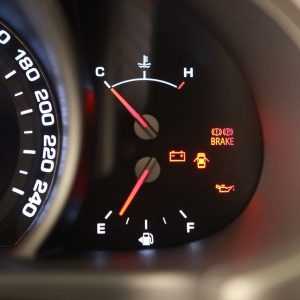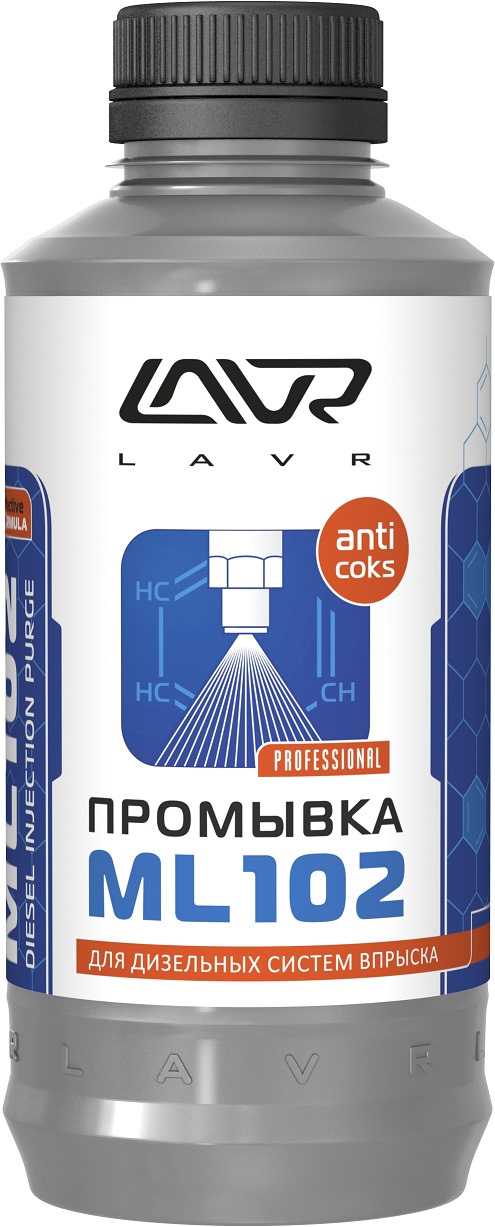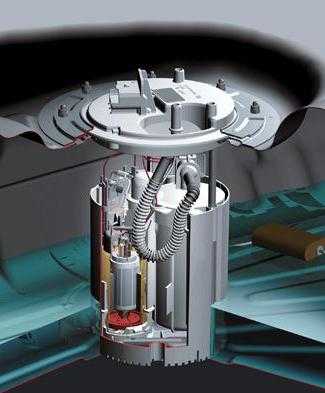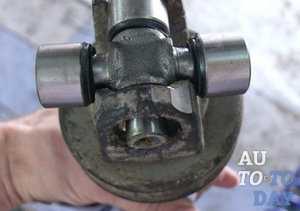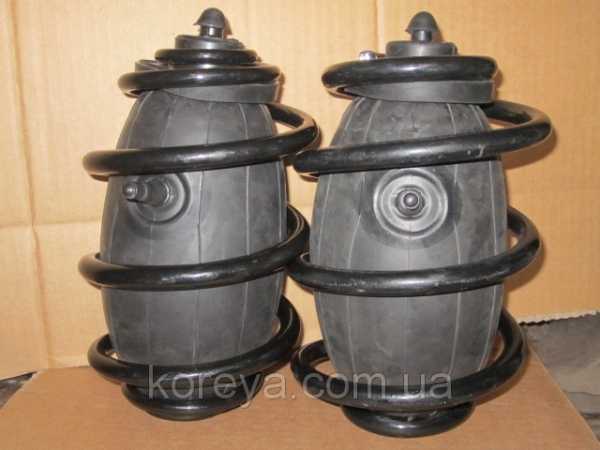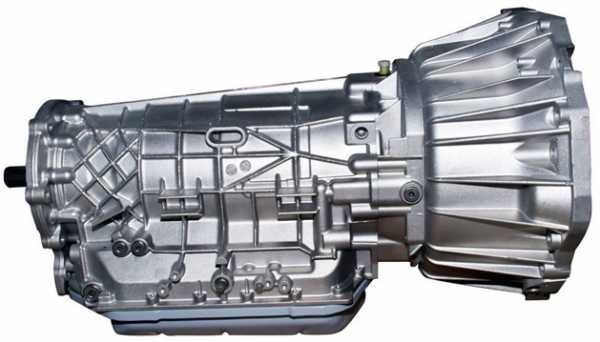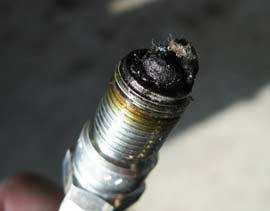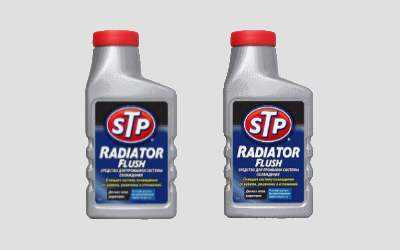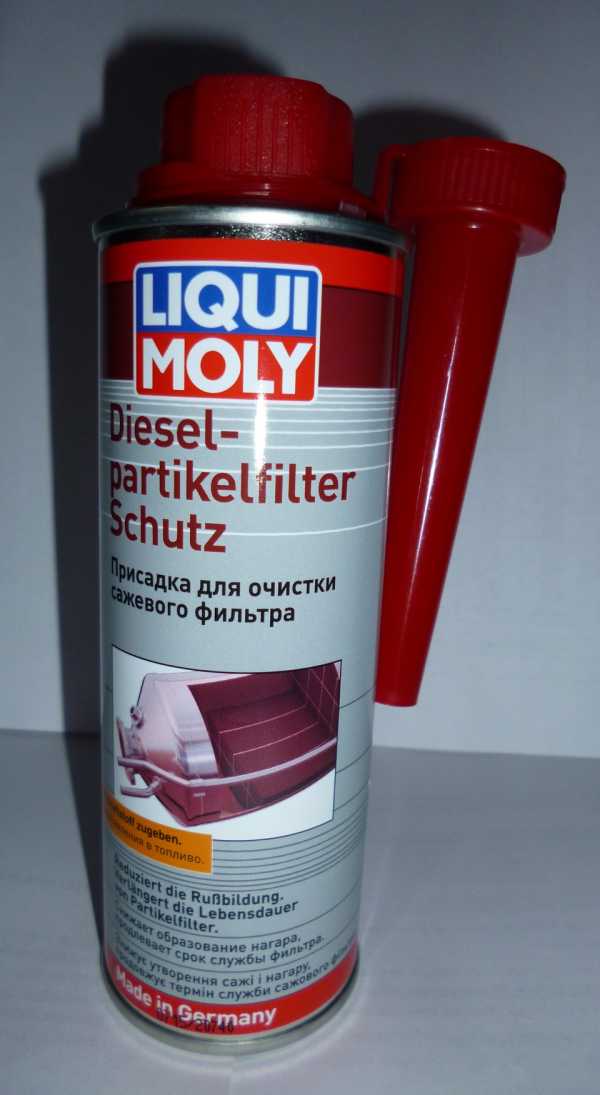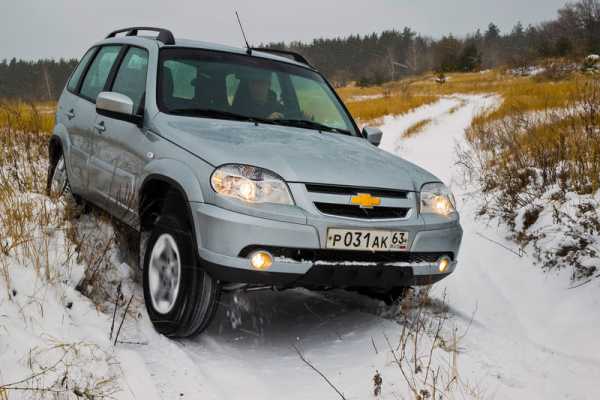Dodge challenger demon srt 2018
2018 Dodge Challenger SRT Demon Is The World’s Fastest 0-60mph Production Car
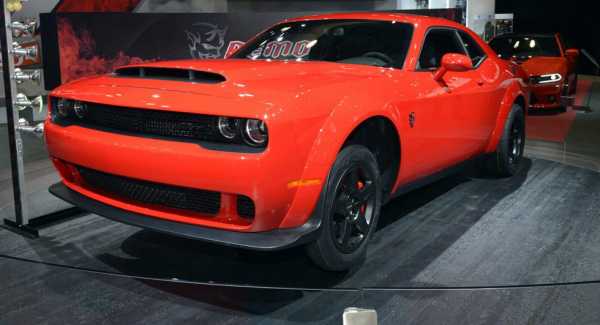
Well, after one of the most drawn-out premiere’s in recent memory, the covers have officially been taken off the 2018 Dodge Challenger SRT Demon at the New York Auto Show. Based around the Challenger SRT Hellcat, the Demon has undergone a comprehensive suite of modifications and Dodge claims that it is the world’s quickest accelerating production car and the fastest quarter-mile production car on the market.
Power from the company’s 6.2-liter supercharged V8 engine has been bumped from 707 hp in Hellcat-spec to 840 hp for the Demon. This power boost has been achieved with the installation of a larger, 2.7-liter supercharger, boost pressure rising from 14.5 psi to 11.6 psi, new pistons, rods and valve train being installed and the implementation of two dual-stage fuel pumps. Further engine upgrades include lifting the rev limit from 6,200 rpm to 6,500 rpm, strengthening the connecting rods and incorporating three sources of intake air (the hood, driver-side headlamp and an inlet near the wheel liner).
What this amounts to is truly phenomenal straight-line performance. Zero to 60 mph (96 km/h) passes in just 2.3 seconds, the quarter-mile can be achieved in 9.65 seconds at 140 mph (225 km/h) and the Demon holds the Guinness World Record for first-ever front-wheel lift in a production car. What’s more, the Demon’s 1.8 g of acceleration is the highest of any production car. Things don’t stop here.
The Challenger SRT Demon is the first street-legal production car that can run 100+ unleaded high-octane fuel to offer maximum performance. Typically, the Demon leaves the factory tuned for 91-octane fuel but the so-called ‘Demon Crate’ includes a new powertrain control module that unleashes the full 840 hp. Like the Hellcat, the Demon includes two key fobs, one which limits power to 500 hp and a second, finished in red, that unleashes 808 hp on regular pump gas and then 840 hp when combined with the control module.
Working alongside the beefed-up engine is an updated TorqueFlite 8HP90 eight-speed automatic transmission. It includes an upgraded torque converter that delivers an 18 per cent increase in torque multiplication that works in conjunction with TransBrake. This system locks the transmission output shaft to hold the Demon in place before a standing start, allowing the engine speed to be increased to 2,350 rpm for the perfect launch. Thanks to the street-legal Nitto drag radials as well, launch force is up by 40 per cent over the Hellcat.
As we already knew, the Demon is more than 200 pounds lighter than the Hellcat. These weight savings have been achieved by removing the front passenger seat, rear seat, 16 speakers, the use of hollow sway bars, lightweight aluminium brake calipers and the removal of a host of wiring. For customers that want the passenger seat and rear seats included, both can be optioned back for $1 each.
Speaking about the car, Dodge’s Tim Kuniskis said “With Demon, our goal was to build a car that would tattoo the Dodge logo into the subconscious of the general market, beyond even our loyal enthusiasts. To do so, we had to set records that have never been set before, do more than has ever been done before, go beyond even the legendary Hellcat. The result: an 840-horsepower, 9-second muscle car unlike anything that has ever come before it.”
Production of the Dodge Challenger SRT Demon will commence this summer with just 3,000 units destined for the United States and 300 heading to Canada. Pricing has yet to be announced.
Video
Photo Gallery
2018 Dodge Challenger SRT Demon Ownership Review | Kelley Blue Book
Update Number 24: Failed Drag Race Event Provides Best MPG Yet
by Karl Brauer on December 17, 2018
Current Odometer: 3,486 miles Latest MPG: 15.29 Lifetime MPG: 12.23 Total Maintenance/Service Costs: $200
Days out of Service: 4 hours, 30 minutes
The good news is, our long-term Dodge Demon just scored its best MPG rating yet, an impressive 15.29 mpg. The bad news is, this was a side effect of driving over 400 miles to a drag strip and not doing any drag racing.
It was very discouraging because we were looking forward to the third and final installment of The Redlist Group’s drag racing event at Famoso Raceway near Bakersfield. We attended the first event in March (see update number 7) and thoroughly enjoyed it because we ran the Demon down the track 14 times in less than 4 hours.
Between the Dodge Demon’s amazing Power Chiller (which leverages the air conditioning to cool the engine) and the March event being well run, without too many racers, it was an ideal day for the Demon to strut its stuff. That day we pulled a 10.23 E.T. at 135 mph, with temps in the 50s and 60s allowing the engine to make excellent power. Not bad for our first ¼-mile experience in the Demon.
The second race in the series happened in August, when temps at that track were hitting mid 90s. We had no desire to drive our Dodge Demon 200 miles to experience that kind of heat and the poor elapsed times it would produce, so we passed. The last event happened this past weekend, with temps similar to the March event and our hopes pinned to a potential 9-second E.T. Sadly, after driving up to the track late Friday night we never got a chance to run the Demon on Saturday…
The main problem was the number of vehicles. The Redlist Group sold too many racer entries, crowding the track with vehicles that kept any one entrant from racing. Then two vehicles (a Challenger and a GT-R) blew up on the track. This didn’t happen on the same run, but close enough that they shut down both lanes for over an hour. Finally, the Redlist Group was running “grudge matches”, which means only pure track cars (no street tires allowed) can race at certain times of the day.
Add it all up and it means we arrived at the track at 9:15 and at 12:15 our Dodge Demon still hadn’t made a single pass. By this time the cooler morning temps were gone and the staging lines were crowded with cars, meaning we’d be lucky to get three more passes in before drag racing ended at 5. At that point we actually forced cars to move in the staging lanes so we could pull out, drive home, and salvage what was left of our Saturday.
Again, very discouraging when you have a 2018 Dodge Challenger SRT Demon meant to race at facilities like Famoso Raceway but the event is run in a way that limits your track time. Some issues, like cars blowing their engine fluids on the track, aren’t the Redlist Group’s fault (though I’ve never seen it take 90 minutes to clean that up...).
But selling too many racer tickets? Having a “MANDATORY” driver’s meeting (yes, it’s capitalized in the event description) that isn’t really mandatory, and most drivers don’t attend? Setting aside multiple times for “grudge match” races that only pertain to 15 out of the hundreds of participants? You might think it’s quick to run only 15 cars, but the extra staging time (most of these cars are towed to the starting line), and the extra prep and set up time they require makes them take much longer to process than something like our Dodge Demon, which can run the track, come back on the return road, and immediately run the track again.
Don’t forget we paid $120 for an entry fee, not to mention the fuel to get there and back, the race fuel that wasn’t used for racing, and the hotel room. Needles to say, we don’t plan on attending another Redlist Group event, with the Demon or any vehicle.
As we noted earlier, there was some good news. Beyond the high MPG figure our long-term Dodge Demon attained from 400 miles of mostly freeway driving (many of them on $10-a-gallon race fuel…), the Demon also reiterated its comfort and overall capability as a street machine. Even with the trunk liner pulled, allowing more exhaust noise into the cabin, the Demon’s Harman Kardon audio system easily compensates with high-quality music while cruising LA’s traffic-clogged streets for multiple hours.
The Dodge Demon’s time in our ownership testing is coming to a close. We bought the car on Janaury 3rd and posted our Long-Term Ownership introduction on Janaury 22nd. We’ll see if we can get the Demon to one more functional, well-run track event before we close out the year, as a 9-second ¼-mile on the factory Nitto drag radials would be a nice conclusion to our ownership experience.
Update Number 23: A Tour of the Dodge Demon’s Engine and Service Points
by Karl Brauer on November 26, 2018
Current Odometer: 3,090 miles Latest MPG: 10.89 Lifetime MPG: 12.03 Total Maintenance/Service Costs: $200
Days out of Service: 4 hours, 30 minutes
One glance at the Dodge Demon’s specs and you might expect an exotic engine compartment with high-tech service points. But lift the Demon’s hood and you see the same basic engine compartment as a Challenger R/T, SRT or Hellcat. Except for the Demon head cast into the 6.2-liter Hemi’s intake manifold. And the red engine block. And the dual headlight openings. Okay, so there are several unique items visible under the Demon’s hood.
Dodge also included some trick performance equipment on the Demon’s engine, like the massive 2.7-liter blower, the power chiller that directs the air conditioning system to cool the intake charge, and beefier engine internals. These make the 840-horsepower V8 the most powerful production engine ever produced, but servicing this brute of an engine remains straightforward.
Dodge was kind enough to mark the washer fluid cap and oil dispstick handle in high-visibility yellow, and place them within easy reach. I will note the flimsy nature of the Demon’s oil dipstick. This is common on modern vehicles, yet still annoying when it easily bends while trying to insert it. You basically have to use both hands to hold the dipstick straight, a trait older cars avoided with more robust dipsticks.
Other service points, including the intercooler reservoir, oil filler, engine coolant, power steering and brake fluid reservoirs and the air cleaner are also easily identified, monitored and serviced when necessary. If you’re having trouble, page 319 of the 2018 Dodge Challenger SRT/Hellcat owner’s manual provides an excellent diagram.
The Dodge Demon’s trunk-mounted battery is also worth noting. This location makes sense from a performance perspective, as a passenger-side, trunk-mounted battery helps balance the Demon’s weight when launching at a dragstrip. Even better, this location doesn’t preclude traditional jump starts, as auxiliary positive and negative battery terminals are located in the engine compartment. They are right next to the fuse box, between the oil dipstick and windshield washer reservoir.
The same daily driver functionality that makes the 2018 Dodge Challenger SRT Demon so appealing from a functional standpoint is reflected in the car’s effective underhood design and easily-accessed service points.
Not bad for a 9-second drag car.
Update Number 22: Our Dodge Demon Uconnect System Gets an Over-The-Air Update
by Karl Brauer on November 5, 2018
Current Odometer: 2,992 miles Latest MPG: 10.89 Lifetime MPG: 12.05 Total Maintenance/Service Costs: $200
Days out of Service: 4 hours, 30 minutes
The Uconnect infotainment system in modern Fiat Chrysler Automobiles, including our long-term Dodge Challenger SRT Demon, is among the best on the market. The 8.4-inch touchscreen offers a high-resolution interface that’s intuitive. It’s loaded with features we’re still discovering, including why the driver’s seat cooler kept coming on.
At first we thought it was a malfunction with the seat controls, but we realized the Demon’s seat cooler was only coming on when the outside temp was toasty. Digging into the system controls we found the “Auto-On Comfort” setting that allows the driver’s seat heating and cooling controls to switch on based on the outside temp. It can also fire up the heated steering when it’s cold outside.
Once there we discovered other settings, like hill start assist, door lock controls and audio controls for the speed-adjusted volume and how long the audio system stays on after the engine is shut off. These are only a few of the multitude of features within the Uconnect system, whose only failing might be the challenge in grasping all it can do.
However, whether you own a Dodge Demon, a Fiat 500 or a Ram Laramie Longhorn Southfork Edition you can go online to the DriveUconnect site and read about the system’s features and how to update the software. Speaking of which, the 2018 Dodge Challenger SRT Demon’s Uconnect system offers over-the-air software updates. This was our first experience with the Demon’s over-the-air update capabilities, which we honestly didn’t know existed.
The update couldn’t have been easier. We just shut the engine off, agreed to the software update when the screen message asked for our approval, and then got out and locked the doors. The next time we got in the Demon there was a brief screen message on startup assuring us our software was fully up to date.
Not all Uconnect systems offer over-the-air updates, only newer models. For older systems you can download the software update on a jump drive and transfer it through the car’s USB port. The instructions for this update process are also at the DriveUconnect site, where you can enter your VIN to check if your car is fully up to date.
Update Number 21: How Many 1-of-1 Dodge Challenger Demons Were Built?
by Karl Brauer on October 22, 2018
Current Odometer: 3,118 miles Latest MPG: 10.89 Lifetime MPG: 12.05 Total Maintenance/Service Costs: $200
Days out of Service: 4 hours, 30 minutes
Talk to any automotive enthusiast and they’ll claim to love performance cars for their performance, not their resale value. Get inside any automotive enthusiast’s head and you’ll learn the truth: yeah, performance is cool…but so is rarity, and the long-term investment potential that goes with it. Every limited-production performance car buyer has been acutely aware of his or her car’s purchase price and resale value throughout the ownership period, no matter how many “I don’t care what it’s worth. I bought to drive not to sell” claims they make.
And, by the way, there’s nothing wrong with that. Vehicle costs are usually the second largest expense in a person’s life. Not knowing or caring about your vehicle’s value isn’t something to boast about. It’s financially irresponsible. All that to say the Dodge Challenger SRT Demon possesses many of the traits that make it a desirable long-term investment. First, it was only built for one year, with 3,000 units sold in the U.S. and 300 sold in Canada. Second, it achieved a long list of production car firsts, ranging from its horsepower to its acceleration to its capabilities (the Demon is the first production car that can pull a wheelie).
Those traits alone mark the Dodge Demon as a unique moment in the history of the automobile, and they are likely the reason Demons keep bringing $120,000-plus on the open market, which is $30,000-plus above their MSRP. Even the introduction of the 2019 Dodge Challenger Hellcat Redeye, with a Demon-rivaling 797 horsepower, didn’t sink the Demon’s elevated market value.
Beyond the Dodge Challenger SRT Demon’s limited production run is yet another consideration impacting a given Demon’s value – configuration. Specifically, how unique is a specific Demon’s combination of colors and options? Keep in mind, this car was offered in 15 exterior colors, plus three exterior matte finish treatments (none, hood only, or hood, roof and trunk). It also came in two interior material choices (cloth or leather), two interior color choices (black or Demonic red) and two seating options (no passenger seat and/or no rear seat). Throw in the audio system upgrade, trunk carpet, red seat belt, sunroof and block heater options and the potential number of Dodge Demon configurations is pretty big.
Having that much variety in how a Dodge Demon could be built created the potential for “1-of-1” status, and many 1-of-1 Dodge Demons were built. Our long-term Dodge Demon is one such example. The Tor Red color is actually the most common (after Pitch Black), and the full matte graphics package isn’t particularly rare, either. However, getting our car with the Demonic Red leather interior instantly makes it 1 of 9 because that interior color wasn’t supposed to be offered with Tor Red exterior paint.
Basically, we had a “connection” inside Fiat Chrysler that let us bend the configuration rules a bit. You might think that alone makes our Demon ultra rare, but forty other Demons were built with Demonic Red Leather in “illegal” exterior colors, including some Plum Crazy cars and at least one Go Mango Demon. What pushes our car to 1-of-1 status are the red seat belts, which weren’t supposed to be combined with the Demonic Red interior. Only one other Dodge Demon has the Demonic Red Leather interior with red seat belts, and it’s an Octane Red car with no rear seat and no matte graphics, making it quite different from our long-term Challenger SRT Demon.
Does this 1-of-1 status suggest our long-term Demon will have higher value than a more common configuration if and when we sell? Possibly, but it’s only one of many factors. Over time there will be Demons purchased for pure investment reasons. Those cars will be kept in bubble wrap with only “delivery miles” (i.e. less than 20) on the odometer. A car in that condition will likely have more value than our long-term car that’s already passed 3,000 miles and has been raced at ¼-mile tracks multiple times.
Which is just fine with us. Despite keeping tabs on our Demon’s value we’re ultimately more enthusiast than investor.
Update Number 20: Is the Dodge Challenger Too Big and Heavy?
by Karl Brauer on October 2, 2018
Current Odometer: 2,940 miles Latest MPG: 10.89 Lifetime MPG: 12.05 Total Maintenance/Service Costs: $200
Days out of Service: 4 hours, 30 minutes
The last two Dodge Demon ownership reports focused on the muscle car’s strengths. After listing the Demon’s top 10 features and then discussing its timeless styling one has to wonder – is there anything wrong with the Dodge Demon, or its parent model the Dodge Challenger?
One recurring complaint regarding Dodge’s performance coupe is easily confirmed with a glance at its spec sheet. Yes, the Dodge Challenger – by modern-day muscle car standards – weighs a lot. Even in its lightest form, with a base 6-cylinder engine, curb weight is 3,900 pounds. Opt for a loaded V8 version and a Dodge Challenger presses down on Mother Earth with 4,500 pounds. That’s between 400 and 600 pounds heavier than the Chevrolet Camaro and Ford Mustang, depending on equipment.
Does more weight equal too much weight? Does the Challenger’s 10 percent poundage penalty mean compromised performance? Apparently not in the area of acceleration, given the Dodge Demon’s record-holding zero-to-60 and ¼-mile times. What about handling and braking? Yes, there’s no 1LE or GT350 version of the Dodge, suggesting it weighs too much to justify a road-course oriented Challenger.
However, if you drive all three cars back-to-back you’ll immediately notice the Challenger’s highly-composed ride quality. It’s not quite luxury-car status, especially in Hellcat or T/A form, but even those versions feel more forgiving than the performance-equivalent Camaro or Mustang. And the Demon’s softer suspension (to improve weight transfer during drag launches) is definitely plush compared to the Chevy or Ford.
Size is another difference between the hefty Challenger and its smaller competitors. This is a component of its higher weight, but it also translates to a larger rear seat and trunk, both of which are more accommodating than in the Camaro and Mustang. Looking to use your two-door American muscle car as an occasional family car? The Dodge Challenger is the only realistic/humane choice.
Which puts us back to the original question: Is the Dodge Challenger too big and heavy? That really depends on what type of performance coupe you’re seeking. For ultimate handling and road course performance the Challenger will never hold up against the Camaro and Mustang. In terms of ride quality, interior space and cargo space the Dodge has the advantage. And the Demon currently has straightline acceleration sewn up.
Should Dodge alter the Challenger’s recipe when the car is redesigned in the next few years? Should it target a lighter weight, smaller dimensions and nimbler handling, even if it means losing the car’s current advantages? There’s really no right or wrong answer here, but perhaps the best combination would be a Dodge Challenger that’s lighter and very slightly smaller without any loss in ride quality and functional space. That might be an engineering impossibility, though it’s the direction that makes the most sense for the next Dodge Challenger. And it would be a great basis for future high-performance versions. Including another Demon.
Update Number 19: Dodge Challenger Styling Holds Up After 10 Years
by Karl Brauer on September 17, 2018
Current Odometer: 2,890 miles Latest MPG: 10.89 Lifetime MPG: 12.05 Total Maintenance/Service Costs: $200
Days out of Service: 4 hours, 30 minutes
The nature of driving a cool car requires us to, well, drive the car. Which means we can’t also look at our cool cars as they roll along. Not a big deal if you own a high-volume sedan or SUV because you can always find another one to observe. But there were only 3,300 2018 Dodge Challenger SRT Demons built, with 300 of those going to Canada and plenty more getting squirreled away by investment owners. This leaves little opportunity to see what a Dodge Demon looks like as it cruises along.
We addressed this issue by letting someone else drive our Dodge Demon to a local cars and coffee while we shadowed it…in a 2005 Ford GT. The GT is yet another car that’s fun to watch from outside, but this is the Dodge Demon Long-Term Ownership Blog, not the Ford GT Long-Term Ownership Blog (yet), so we’ll stick to discussing the Dodge. We will note that, once we arrived, the cars and coffee crowd did pay more attention to a 13-year-old Ford GT than our brand new Demon…
Anyhoo, except for some brief shots in the last Fast and Furious movie this was our first real opportunitiy to see what a Dodge Demon looks like as it prowls the streets. From our perspective (as captured in the accompanying photos), it looks pretty damn cool. The Street Tire package our Demon was wearing at the time swaps sidewall real estate for wheel material, and the window tint we installed provides quite a contrast against that Tor Red paint.
Various terms, including “badass”, “hoodlum” and “rolling menace” affenctionately floated through our heads as we watched the Demon cruise the normally whitewashed landscape of South Orange County. Looking at it made us wonder why we haven’t been pulled over multiple times for disturbing the peace, at least from a visual perspective. It also reminded us how perfectly drawn and executed the Dodge Challenger’s basic lines and proportions were when it debuted 10 years ago.
A decade on the Challenger, particularly in Demon form, still looks right. Note to Dodge: Be very careful when the inevitable Challenger redesign finally arrives. There’s far more to be lost than gained by making changes…
Update Number 18: Top 10 Best Dodge Demon Features
by Karl Brauer on September 5, 2018
Current Odometer: 2,817 miles Latest MPG: 10.89 Lifetime MPG: 12.05 Total Maintenance/Service Costs: $200
Days out of Service: 4 hours, 30 minutes
We’ve owned our 2018 Dodge Challenger SRT Demon for 8 months, and we’re nearing 3,000 miles on the odometer. That odo figure might not sound high, but we’ve experienced the Demon in every circumstance, from high-speed cruising to stop-and-go crawling, plus over 60 passes at a drag strip. We’re treating the Demon like many of our fellow owners treat their Demons – as a real car, not a museum piece or investment device.
The result is full familiarity with the Demon’s many qualities. We’re talking all of them, not just the performance aspects highlighted in all the write ups by editors who spent, maybe, 1 week in Dodge’s street-legal drag car. So here they are, the Top 10 Best Dodge Demon features from a real long-term owner’s perspective, many of which you might not see coming…
1. Sensory-Pleasing Leather: It’s a drag car that does wheelies, right? Right, so why did Dodge bother putting the most supple (and best smelling) leather we’ve ever had the pleasure to caress (and inhale). Not joking – the Demonic Red leather in our Demon looks and feels like a super-luxury car. Our favorite aspect? Leave the Demon closed up for a couple days, then open the door and bask in the car’s aroma therapy that’s almost (almost) better than burnt rubber.
2. Uconnect’s Visual Feast: Uconnect’s 8.4-inch screen and rich array of features are appreciated on any FiatChrysler vehicle equipped with the system, but performance models add a wealth of performance screens illustrating performance metrics. The Demon adds yet another set of performance-tracking metrics unique to Dodge’s bad boy, including intercooler temp and high-output mode when running 100-plus octane fuel. It’s like NORAD for drag racers.
3. Functional Interior Space: If you’re willing to let multiple people sit on the Demon’s awesome leather (we’re still not sure we are…) the car can easily transport four full-sized adults. Like every 2-door coupe, getting in and out of the rear seat requires some physical contortion. But once back there it’s a fully functional space for two adults. That’s not something the other players in this field (cough-Camaro-cough-Mustang) can match.
4. Demon-Themed Toys: We’re not talking 1/18th scale models or remote-controlled cars (though you can get Demon versions of those, too). No, we’re talking crates and jacks and impact drivers and tech manuals and car covers and telemetry systems and at least a few more things we’ve forgotten. Owning a special car is cool, and the more Demon-specific, Demon-badged items available the more special the Demon feels. Thus it feels really special.
5. Long-Distance Cruising: Remember all those warnings about drag radial wear and not operating the Demon on highways or during rain? Well, those were prudent legal moves by Dodge, but the reality is the Nitto drag radials work pretty well on public roads. The optional Street Tire package works even better (though with a notable hit to traction). Either tire is relatively quiet at highway speeds and combines with the Demon’s relaxed suspension for extremely comfy highway cruising.
6. It Turns, Too: The drag car that pulls wheelies (and has awesome leather) also goes around corners. Really well. As noted in Update 12, the Demon can keep up with much lighter, nimbler cars on a road like Angeles Crest Highway while wearing its street tires with the suspension in “Sport” mode. Yeah, it’s heavy, so you want to be extra smooth and progressive with your inputs, but if you are you’re rewarded with rapid travel, even along twisting asphalt.
7. Audio System Delight: Performance fans would argue the Dodge Demon’s 800-horsepower audio system is the only one you need. Yeah-yeah, whatever. The engine sounds great but so does the right AC/DC song when coordinated with the engine’s supercharger whine. Our Demon includes the Comfort Audio Group, which means 18 speakers and enough amperage to fill the cabin with high-quality sound. Bonus points to Dodge for full CarPlay integration, too.
8. Exhaust System Delight: If you refuse to even power up the Demon’s audio system there is tremendous sonic enjoyment available from under that power bulge hood. A recent series of ride-alongs for Kelley Blue Book interns included high rpm activity while passing under a freeway bridge. Yes, the kids loved the Demon’s decibel levels, eliciting wide eyes and big grins as the V8 revved past 5,000 rpm.
9. Smart Traction Control: Even with drag radials the potential for disaster is high when you put over 800 horsepower on the street. However, Dodge utilizes a capable traction and stability control system to keep the Demon pointed where the driver intends. If you remove the drag radials and/or turn off traction control your post-crash claims of victim-hood are null and void. Sure, that won’t stop people from doing it, but it will, hopefully, prevent them from achieving successful legal action.
10. It’s Really Fast: The other 9 “best” features may or may not have been obvious, but let’s not forget the Dodge Demon’s reason d’etre. It’s fast. Really fast. Like Back-to-the-Future-hit-88-miles-per-hour-twin-flaming-tire-patches fast. It’s not easy to alter the time-space continuum, but the Dodge Challenger SRT Demon comes close. Einstein said the faster you go the slower time moves, which means the Dodge Demon is essentially a four-wheeled Fountain of Youth.
Update Number 17: We Attend a Dodge Demon and Hellcat Car Show
by Karl Brauer on August 20, 2018
Current Odometer: 2,750 miles Latest MPG: 10.63 Lifetime MPG: 12.13 Total Maintenance/Service Costs: $200
Days out of Service: 4 hours, 30 minutes
It’s asking a lot to have a car event that’s all about your car, yet if a vehicle has a sufficient following it can happen. Last week we didn’t attend a Dodge Demon-specific gathering, but we did attend a Demon and Hellcat event in Long Beach. While only 3,300 Dodge Demon’s were produced, roll in every Dodge with a Hellcat drivetrain and you get a number worthy of its own car show.
This car show was pretty chill in terms of entry fee and activities, meaning there was nothing to speak of for either. The Instagram instructions were simple enough: “If you have a Dodge Demon or Hellcat meet at the top of the Long Beach Aquarium parking structure at 8 am this Saturday.” Even we could handle that, and with Long Beach less than 30 miles away it wasn’t a huge investment in time or fuel to drive up from Irvine and see who showed.
The turnout was impressive, with 10 Dodge Demons and another 15-20 Hellcats in Challenger and Charger form rumbling up the parking ramps. This was the largest number of Dodge Demons we’ve seen in one place, and the color spectrum was pretty rich, too. Our Tor Red Demon was one of four gleaming in the morning coastal light, joined by a Yellow Jacket, Octane Red, Destroyer Gray, Pitch Black, F8 Green and B5 Blue Demon.
More interesting than the color spectrum was the body wrap spectrum. Four of the 10 Demons had some form of color and/or pattern variations from stock. The Yellow Jacket Demon had a colorful taxi theme, two of the other Tor Red Demons had contrasting stripes or body panels, and the Destroyer Gray car sported a beautiful matte finish. Once upon a time it took a real commitment to alter a car’s exterior, especially a limited production car. Now you can install elaborate body wraps for minimal cost and simply remove them when you want a new look (or want to sell your car and present it as stock to buyers).
The gathering of performance Dodge’s lasted about 2 hours before people scattered, with many of them hitting the nearby Bubba Gump Shrimp Co. for brunch. It wasn’t the most elaborate of events, but it was a great reminder of how easy it can be to organize a car show with minimal fuss and zero cost. A few Instagram posts to announce it, a 40-minute drive and BAM! Ten Dodge Demon owners are hanging out and comparing ownership experiences.
Next time we’re going to include a drive along the coast.
Update Number 16: Our Dodge Demon Gets Recalled and Jack Pads
by Karl Brauer on August 6, 2018
Current Odometer: 2,618 miles Latest MPG: 10.63 Lifetime MPG: 12.13 Total Maintenance/Service Costs: $200
Days out of Service: 4 hours, 30 minutes
Our last Dodge Demon ownership report chronicled our latest drag strip adventure, but one other track prep item was performed the night before we raced. We installed a set of jack pads on the front, underside of our 2018 Dodge Challenger SRT Demon. These pads serve two purposes. First, they make it easy to locate the proper jack points. Second, they provide a layer of cushion between a vehicle’s frame and floor jack (or hydraulic lift).
It’s worth noting the Dodge Demon has jack pads from the factory…but only for the rear jack points. We’ve used them for every one of our many rear tire swaps and appreciated the additional confidence they provided when lifting the Challenger. Why Dodge didn’t include them in for the front jack points is hard to understand, though cost is always a good assumption when it comes to a production car.
Regardless, we located a company that produces jack pads for the modern Dodge Challenger, including our 2018 Demon. The price, including shipping, is less than $40 and the kits comes with two rubber pads, mounting bolts and frame insert nuts. The pads are made of Delrin (a high grade plastic) and weigh 3 ounces each.
We ordered the set from Millfast Products and installed them on our long-term Demon before swapping the wheels for our last drag strip run to Auto Club Dragway. On Dodge Challengers the front jack points are further inboard than the rear, making these pads even more valuable in locating the jack points. Installation was straightforward, though you have to carefully thread the insert nuts to keep them from moving after setting them in the frame holes. There was a learning curve on the first jack pad, but the second proved much easier once we had the technique down.
The other news for our Dodge Demon was addressing its first and only (so far) recall. The recall relates to the Demon’s cruise control and a problem that could, potentially, cause unintended acceleration:
“The fault handling strategy of the Powertrain Control Module (PCM) software on your vehicle [1] does not remove positive torque requests from the engine controller if the CAN-C bus stops communicating while the cruise control is requesting positive torque. In the instance of a short in the vehicle causing the CAN-C bus to stop communicating while the cruise control is active and the vehicle speed is below the set speed such that the cruise control system is requesting positive torque at the exact moment of the short, it is possible for a positive torque request to be locked on the PCM which may result in either the vehicle maintaining its current speed or possibly accelerating. If the driver does not shift to neutral or apply the brakes to stop the vehicle this condition can cause a vehicle crash without warning.”
That sounds scary when you’re talking about an 840 horsepower muscle car, but reading the full recall description shows it requires other systems in the car to fail and a short circuit to occur “…at the exact moment of the short…”. While possible, that combination of events seems pretty unlikely. Still, you should always get recalls addressed on your vehicle, so we scheduled an appointment with Courtesy Dodge in San Juan Capistrano and it was done in less than an hour.
This recall impacts a wide range of vehicles beyond the Dodge Demon, so if you own one listed below please check NHTSA.gov, input your VIN, and see if your car needs a control module reflash.
- Dodge Journey MY 2014-2018 SUV
- Dodge Durango MY 2014-2018 SUV
- Dodge Challenger MY 2015-2018 2-Door
- Dodge Charger MY 2014-2018 4-Door
- Ram 3500 MY 2014-2018 Pickup Truck
- Ram 3500 Cab Chassis MY 2014-2018 Pickup Truck
- Ram 3500 Less Than 10,000 Pound Cab Chassis MY 2016-2018 Pickup Truck
- Ram 2500 MY 2014-2018 Pickup Truck
- Ram 4500/5500 Cab Chassis MY 2014-2018 Pickup Truck
- Ram 1500 MY 2014-2019 Pickup Truck
- Jeep Wrangler MY 2018 SUV
- Jeep Grand Cherokee MY 2014-2018 SUV
- Jeep Cherokee MY 2014-2018 SUV
- Chrysler 300 MY 2014-2018 4-Door
- Chrysler Pacifica MY 2017-2018 Van
- Chrysler 200 MY 2015-2017 4-Door
Update Number 15: Our Dodge Demon Makes Its Second Quarter-Mile Appearance
by Karl Brauer on July 23, 2018
Current Odometer: 2,581 miles Latest MPG: 10.63 Lifetime MPG: 12.13 Total Maintenance/Service Costs: $200
Days out of Service: 4 hours, 30 minutes
Our long-term Dodge Demon hasn’t been to a quarter-mile drag strip since March 24, and when we realized that a few weeks ago we started scouring local track web sites looking for an opportunity to get our TorRed Challenger back where it belongs. We’ve been to Irwindale’s drag strip twice, but that is an eighth-mile track. An eighth-mile was fine for learning how to launch the Demon. Now we’ve got that pretty much figured out and want to keep chasing the elusive 9-second E.T.
Our drag strip perusal quickly paid off, showing an event at Autoclub Dragway in Fontana, California. This track is almost the exact same distance from Kelley Blue Book as Irwindale, yet its Test and Tune days use the full quarter-mile distance. Score! However, we discovered this one day before the next Test and Tune date, which meant scrambling to prep the Demon. Getting a 2018 Dodge Challenger SRT Demon into the 9s requires all 840 horsepower from its 6.2-liter supercharged V8, and that means running it on 100-plus octane fuel.
A gas station in Newport Beach, about 10 miles from Kelley Blue Book, sells 101 octane fuel. And it ain’t cheap. At $9.99 a gallon it takes approximately $180 to fill the Demon’s 18-gallon tank. Of course you don’t need a full tank of high-octane fuel, but dealing with mixing it and trying to keep the computer happy proved troublesome during our last drag strip visit. The Demon’s tank was nearly empty by the time we got to the station so we bit the bullet and filled it up with the good stuff. Our credit card stopped after the first $99.99 so we had to run it a second time. Total fill-up bill: $171.02.
An unintended side effect of spending this much money was driving the Demon back from the gas station, and on to the drag strip the next day, at very light throttle. Realizing how much every drop of fuel was costing us had us saving as much of it as possible for the track. We spent that evening swapping the 20-inch Pirelli PZero street tires for the Nitto drag radial rears and “skinny” Mickey Thompson front tires.
Yes, we made the 120-mile round trip from home to track, and back, on the skinny front tires. They are DOT rated and proved capable of handling such use, though we kept the Demon’s speed below 60 mph the entire trip (except during our drag runs). If you can’t restrict your speed like we did, plus leave plenty of braking distance in front of you at ALL times and managing corner speeds very carefully, we’d suggest never driving on public roads with these tires.
Our first run at the track happened at 9:17 am after getting through tech. The temperature was around 75 degrees and the Dodge Demon pulled an 11.09 as we re-aquainted ourselves with how to launch it. Over the next 4 hours we managed 15 runs in the Demon as the temperature rose to over 90 degrees. Our best run came right at the mid-way point, run number 8 at 11:18. The Demon pulled a 1.64 60-foot time, a 6.83 eighth-mile time and a 10.606 at 127.93 mph in the quarter mile. The temp was in the mid 80s by that run, which is considerably higher than the mid-50s we had at Famosa Raceway when the Demon ran 10.23 at 135 mph (it’s best time so far).
Clearly we didn’t hit 9s, though the Demon was running 10.7s an hour later when the temperature had passed 90. This was easily the hottest conditions our Demon has yet faced. For it to remain in the 10s in Riverside County heat, in July, and show zero issues otherwise after 15 runs, is a credit to the Dodge Demon’s robust engineering. The Power Chiller continually managed the V8’s intercooler temperature, keeping it right at “target temp” despite the heat waves pulsating up from the track’s pavement and the Demon’s flat black hood.
There’s another Mass Traction event at Famosa Raceway in August. A night event. We’re hoping our long-term Dodge Demon will make an appearance…
Update Number 14: Our First Official Dodge Demon Service, Quick and Courteous
by Karl Brauer on June 30, 2018
Current Odometer: 2,514 miles Latest MPG: 13.22 Lifetime MPG: 12.25 Total Maintenance/Service Costs: $200
Days out of Service: 4 hours, 30 minutes
Southern California’s highly active car community means you can find a local Cars & Coffee pretty easily. The closest weekly gathering to the Kelley Blue Book offices is in San Juan Capistrano, which also happens to be where the dealer that sold us our 2018 Dodge Challenger SRT Demon is located.
After showing the Demon off last Saturday morning we decided to stop at Courtesy Dodge in San Juan Capistrano to schedule a service appointment. We bought our Dodge Demon on January 3rd, and the owner’s manual recommends changing the synthetic oil every 6 months. With synthetic oil it seems a bit excessive to change it every 6 months. However, this 6-month period involved not only breaking the engine in but three different trips to the drag strip. Getting fresh oil in the Demon’s 800-plus horsepower V8 seemed the prudent move.
We didn’t know if Courtesy Dodge’s service department was open on Saturdays, but figured we’d probably find someone who could schedule the appointment even if it wasn’t. Turns out their service department is open on Saturdays, and on this particular Saturday they had room for our Demon in their schedule. Less than 20 minutes after arriving our Torred Dodge was shuttled inside for an oil change and tire rotation.
Even more amazing was stumbling on a “Free First Oil Change” coupon from Courtesy Dodge as we scrolled through email while seated in the waiting area. We were actually looking for another email related to the Demon and had completely forgotten about this coupon. The service writer had quoted us $110 for the oil change, plus $24 for the tire rotation, but when we showed her the coupon on our iPhone she said, “Okay, that’s good enough for me.” Our total bill was $24.95 for the tire rotation, $0 for the oil change, with total wait time about an hour.
Our long-term Dodge Demon has just over 2,500 miles on the odometer after 6 months, which tracks to around 5,000 a year. We’d like to get that number higher and will have to see if any road trip opportunities present themselves. The good news is we’ve added yet another drag strip visit to the Demon’s pedigree, so it’s not like we aren’t using it for its intended purpose. More details on our Demon’s latest track experience in the next update…
Update Number 13: Raise Your Hand If You’ve Read Your Owner’s Manual
by Karl Brauer on June 26, 2018
Current Odometer: 2,372 miles Latest MPG: 12.54 Lifetime MPG: 12.16 Maintenance/Service Costs: $105
Days out of Service: 3 hours, 30 minutes
Go on the Dodge Demon ownership forum and you’ll see plenty of people asking questions about Dodge’s 800-horsepower drag car. That’s really the main purpose of those forums – owners sharing experiences with other owners when questions arise. Sometimes those questions can only be answered by fellow owners, like which Dodge dealer in a given region offers the best Demon service.
But many Dodge Demon (and pretty much every other vehicle’s) questions can be answered by referencing the manuals included with all new vehicles. These owners manuals are a wealth of information, though let’s be honest, few people even know where their owner’s manual is, and almost nobody actually reads it cover-to-cover. After looking through our long-term Dodge Demon’s collection of manuals I can’t blame folks for passing on this assignment.
A methodical analysis of the leather pouch in our Demon’s glove box revealed the following items:
1. 2018 Challenger User Guide, total pages – 261 2. Drive Mode Supplement (focused on Demon-specific features), total pages – 78 3. 2018 Challenger Quick Reference Guide, total pages – 14 4. 2018 Demon Supplement, total pages – 36 5. 2018 Dodge Challenger SRT Demon Tips, total pages -- 14
6. Customer Care, Arbitration and Lemon Law Rights, total pages – 60
Add it up and you’re looking at 463 pages of reading material. Throw out the Customer Care/Lemon Law book and you’re still over 400 pages. This doesn’t include additional booklets available at techauthority.com, a site that specializes in late model Mopar information manuals. Go there and you can get three more manuals:
1. 2018 Dodge Challenger Owner’s Manual, total pages – 500 2. 2018 Dodge Challenger SRT/Hellcat Owner’s Manual, total pages – 480
3. 2018 Dodge All Vehicles Warranty Information – Gas, total pages -- 30
As the page counts suggest, the owner’s manuals are more thorough than the 2018 Challenger User Guide that came with the Demon, and the warranty booklet is more comprehensive too. Sure, there’s overlap here, especially between the Challenger User Guide, Challenger Owner’s Manual and SRT/Hellcat Owner’s Manual, but you’re still talking hundreds of pages no matter how you slice it. This doesn’t include a 2018 UConnect manual also available at techauthority.com. UConnect is one of the best infotainment system available on new vehicles. It’s loaded with features and fairly intuitive, but to fully understand all UConnect has to offer takes some time.
Looking at this reading list is enough to make any Demon owner throw up his hands and say, “I’ll just figure it out as I go.” That’s what most people do when they buy a new car, and that approach generally works. But the Dodge Demon isn’t most cars, and fully understanding its features and capabilities isn’t just smart, its prudent to safely operate a vehicle with this much horsepower.
The good news is that you can pick your battles here and get the most valuable information without a War and Peace experience. Don’t forget there’s also the Dodge Demon Track Tech Manual written by the editors of Hot Rod magazine. It’s included with every Demon purchase and should arrive within a couple weeks of taking delivery.
This book covers everything from the Demon’s somewhat specific break-in procedure to the race technologies that make a 9-second ¼-mile possible to the drag technologies so unique to the Demon. Line Lock? Power Chiller? Transbrake? Torque Reserve? Launch Control? High-Octane Mode? All these features and more are fully explained with slick illustrations and graphics. Plus, there’s an exceedingly cool Dodge Demon pen included with the Track Tech Manual, too.
If you can just thoroughly read the Track Tech manual (75 pages) you’ll have the most critical information necessary to fully leverage the Dodge Demon’s capabilities. However, the Track Tech manual doesn’t touch on the rest of the Challenger’s features or the vast array of technology buried in the UConnect system. If you combine the Track Tech manual with the 2018 Challenger Quick Reference Guide (16 pages) you’ll be covered for both racing and general driving, but you still won’t know the Demon’s service schedule. The oil, for instance, is supposed to be changed every 6 months. And you won’t fully appreciate the UConnect system unless you commit to the “Multimedia” section of the 2018 Challenger SRT/Hellcat Owner’s manual, pages 387-457.
Read those items and you’ll be better off than 95 percent of new car owners and, sadly, probably better off than the majority of Dodge Demon owners.
Update Number 12: A “Drag Car” That Corners? You Bet Your Lateral Gs!
by Karl Brauer on June 8, 2018
Current Odometer: 2,193 miles Latest MPG: 12.92 Lifetime MPG: 12.13 Maintenance/Service Costs: $105
Days out of Service: 3 hours, 30 minutes
The Dodge Challenger SRT Demon has a painfully obvious mission: Go Really Fast In A Straight Line!
That’s what it’s designed for, that’s how it debuted at the 2017 New York International Auto Show (complete with an indoor drag race) and that’s the nature of its claim to fame. Most prowerful production V8 ever. Quickest 0-60 time ever. Quickest ¼-mile time ever. First production car to pull a wheelie. The picture is clear – the Dodge Demon is a straight-line drag car.
We kept telling ourselves this as we tore across one of the most scenic, and sinewy, roads in California. Angeles Crest Highway is sports car (and motorcyclist) nirvana. The road snakes along the top of the San Gabriel Mountains, through the heart of beautiful Angeles National Forest. The bulk of the turns are medium-to-high-speed sweepers, meaning you can carry a lot of speed if you’ve got adequate skill and a capable machine.
We’d like to think our driving skills are adequate, but can any amount of skill navigate sports car heaven in a drag car? If the drag car in question has little Demon heads on each fender, the answer is “YES!” Our long-term Dodge Demon, now equipped with the Demon Street Tire Package, delivered surprising levels of speed and confidence around – you guessed it – corners!
We first noticed the Demon’s unexpected handling prowess within days of taking delivery. We drove the red Challenger up to California’s Central Coast and across its Central Valley to break in the engine, and encountered several stretches of two-lane twisty highway along Route 166. That was with the Demon rolling on its original Nitto drag radials and traveling through more gentle curves, yet we were still surprised by its handling proficiency.
Angeles Crest Highway is a far more demanding road, but after swapping the 18-inch Nittos for 20-inch Pirelli PZeros we figured the Demon was as “nimble” as it would ever get. We hoped for the best while keeping our expectations relatively low. As the world’s quickest production drag car it seemed unrealistic to expect truly competenent cornering from the two-plus-ton Dodge.
Of course it’s always nice when expectations are exceeded, and we can now confirm the Demon’s ability to hang with sports cars hailing from Detroit (Mustang GT), Tokyo (Civic Type R) and even Stuttgart (911). All three were part of our driving group, and whatever ground those models gained on the Dodge Demon in tighter corners was quickly forfeited on the straights between said corners. Thank you 800-horsepower V8.
Making time on a twisty road is really a combination of attaining speed whenever the road straightens (no matter how briefly) and maintaining as much of that speed as possible through the corners. As one might expect, the Demon made the most of every straightaway. As one might not expect, the Demon confidently maintained much of that speed around corners.
There was a definite learning curve, and the smooth inputs that benefit all performance driving is critical to keep from upsetting the Demon’s substantial chassis. But the Demon’s sticky Pirellis tires, effectively-damped suspension (in “Sport” mode), powerful brakes and communicative steering didn’t just manage Angeles Crest Highway, they made it genuinely fun once we understood how to manage the car’s heft.
To be clear, if you’re a Dodge Demon owner expecting Lotus-levels of agility you’ll still be disappointed. However, if you’re a Demon owner that’s written off the car’s cornering capabilities you’ll be pleasantly surprised if you take the time to prudently eplore its handling repertoire.
Update Number 11: Drag Radials Come Off; Traction Control Stays On!
by Karl Brauer on May 29, 2018
Current Odometer: 2,040 miles Latest MPG: 15.03 Lifetime MPG: 12.05 Maintenance/Service Costs: $105
Days out of Service: 3 hours, 30 minutes
Our previous update discussed the variety of Dodge Challenger SRT Demon extras owners can get for the Dodge Demon. This long-term update will focus on one of those items, an item that happened to arrive last week – the Demon Street Tire Package.
Four wheels and tires are included in this package, the exact same wheels and tires that come standard on a Widebody Hellcat. The package was announced by the Dodge/SRT performance division back on November 10, 2017, but it was announced with “late availability” through Mopar (FCA’s part division). Late availability apparently means late May, 2018, and we’ll take it. Better late than never.
Dodge described the Demon Street Tire Package (part number 82215919) as a way for Demon owners to “keep their drag radials fresh for track use only…” The package includes four lightweight forged wheels, size 20x11 inches, with a “Devil’s Rim” pattern. The wheels come ready to bolt on, with a set of Pirelli PZero 305/35ZR20 performance tires mounted and balancd and TPS (tire pressure monitoring system) sensors installed. The suggested price is $3,699, quite a steal for this quality of rolling stock.
Sure enough, that’s what greeted us when Courtesy Dodge in San Juan Capistrano called and said our Demon Street Tire Package was in. We drove down in a brand new Volvo V90 station wagon (press car), figuring the wheels would fit in the back. They probably would have, but it would have been a tight fit and I hated the idea of scuffing the plush Volvo’s interior. “No problem,” said Courtesy Dodge’s parts manager, “We can deliver them. Right now in fact.” A brief 15-minute, 9-mile drive later, with the Courtesy Dodge parts van following, and the wheels were at our house. Now that’s service!
The next day we used the Demon Crate-supplied floor jack and impact wrench to swap the Demon’s factory drag radials for the street tires. The entire process took less than 30 minutes, proving the continued value of that $1 Demon Crate. It may have been a component of the Dodge Demon’s marketing process, but it was also a helluva deal that continues to pay dividends.
The 20-inch wheels are, as expected, slightly taller than the stock 18-inch drag radials. A side benefit of this increased elevation is clearance when driving the Dodge Demon in and out of our driveway. With the drag radials the Demon’s aggressive front splitter would scrape unless we drove very slowly, at an angle, while entering/exiting the driveway. Wearing the Street Tire Package the splitter never hits, even if we drive straight up the driveway at an aggressive 5-10 mph. Bonus!
Beyond increased clearance we’ve noticed subtle changes in our long-term Challenger’s driving dynamics. The Pirellis offer less sidewall and a stiffer rubber compound, which, as expected, firmed up the Demon’s ride quality and steering response. We already thought the Demon handled remarkably well in “Sport” mode – for a drag car – but it’s a tad nimbler with these tires.
Conversely, there’s been a substantial drop in traction when hitting the loud pedal. The Nitto drag radials do their best to harness the Demon’s power on the street, making moderate use of the throttle possible on clean, dry pavement. With the Pirellis, anything approaching aggressive driving results in immediate tire spin before traction control reigns things in. With the Demon’s standard drag radials you should really never turn off traction control except when using Drag Mode at the strip. And if you put the Demon street tire package on and turn traction control off…
Update Number 10: The Dodge Demon’s Many Extras Extras! Read All About Them!
by Karl Brauer on May 14, 2018
Current Odometer: 1,994 miles Latest MPG: 15.03 Lifetime MPG: 12.05 Maintenance/Service Costs: $105
Days out of Service: 3 hours, 30 minutes
If you’ve been watching the launch of specialized vehicles over the past few years you’ve likely noticed a trend: extra “stuff” that goes far beyond the vehicle itself. Automakers fully appreciate that the type of car buyers who chase after specialized or limited production vehicles also geek out over specialized or limited accessories. It’s not a new phenomena. The 1987 Buick Regal GNX included an 80s-appropriate satin jacket, and the 2005-2006 Ford GT was supposed to come with a hardcover book (we say “supposed to” because many dealers either kept the book or sold them on ebay…).
We could come up with dozens of other past examples, but in the long history of car makers packing extras into vehicle ownership none of them hold a pitchfork to what a 2018 Dodge Challenger SRT Demon offers in terms of extra “stuff”. We’ve already chronicled the most impressive item, the Demon Crate, which is actually a combination of about 15 items packed in arguably the coolest garage accessory ever created. And all of it is offered for the low-low price of $1. But that’s just the beginning…
If you own a Dodge Demon you can also get a:
1. Track Tech Manual, leather bound, written by the editors of Hot Rod magazine. Cost: Free (should arrive within 2 weeks of taking Demon delivery)
2. Dodge Demon Authentification Package with 12 build sheets and a carbon fiber Certicard. Cost: $1
3. Custom Car Cover, indoor only, satin stretch fabric, in a paint scheme that matches each Demon’s exterior color and with custom embroidery. Cost: $695
4. Rear-Seat Delete Package that lets Demon owners remove their rear seat and have a similar look to Demon’s ordered without a rear seat. Cost: $449
5. Demon Street Tire Package, which is essentially the standard 20x11 wheel and tire package found on widebody Hellcats. Cost: $3699
6. Speedlogix Four-Point Harness Bar that bolts into pre-drilled holes (behind the rear seat) to give Demon owners a four-point race harness. Cost: $1,300
7. Dodge Demon VBOX Video HD2 System that logs vehicle data and records real-time drag strip runs; includes two video cameras. Cost: $3,680
While most of these items require additional money they also include Demon-specific badging and many of them can’t be purchased without a Dodge Demon VIN, meaning you have to be an owner to get them. That should limit the number of items that get produced, just as Demon production itself was limited.
We already have most of these items for our long-term Demon, and we plan to get the rest in the next couple of weeks. We’ll do a deeper dive on each one in future updates, but as stated above, Demon ownership goes far beyond taking delivery at a dealership and occasionally hitting the track. Dodge clearly knows its audience and is catering to it with a plethora of Demon-specific items that most owners will likely eat up and ask for more.
Update Number 9: The Demon’s Drag Radials – More Robust Than We Thought
by Karl Brauer on May 1, 2018
Current Odometer: 1,959 miles Latest MPG: 15.03 Lifetime MPG: 12.05 Maintenance/Service Costs: $105
Days out of Service: 3 hours, 30 minutes
The Dodge Challenger SRT Demon’s factory Nitto drag radials include a zero treadwear rating and a host of rules owners had to agree to before taking possession of their muscle car. If you follow these rules to the letter you should never drive the Demon on the highway, in wet weather or at temperatures below 15 degrees Fahrenheit. With Kelley Blue Book based in Southern California it’s unlikely we’ll have to worry about that last restriction, unless we take the Demon on a ski run next winter (unlikely). But the LA basin does have its fair share of highways, and it does, sometimes, rain here.
After 4 months of Dodge Demon ownership has either proven to be an issue? Honestly, no.
Our long-term Demon’s odometer is about to hit 2,000 miles, most of those traveled on highways at speeds above 60 mph. The exact wording in the “2018 Dodge Challenger SRT Demon Customer Acknowledgement” regarding the Nitto drag radials stated, “The Vehicle’s Nitto NT05R drag radial tire (the “Drag Tires”) meet United States Department of Transportation requirements, but they are not intended for highway use, as the expected miles of wear from the racing compound is greatly reduced.”
That would certainly explain the Nittos’ double-zero treadwear rating, though we have to say, they are holding up remarkably well. Not only are the bulk of those 2,000 miles from highway use, but the Demon has made 23 drag strip runs, each preceded by a requisite burnout in the burnout box to clean the tires and heat them up. Additionally, the tires have been run at lowered pressures (anywhere from 16 to 27 psi) multiple times to further improve launch grip. That’s a lot of heating/cooling cycles and a lot of smoke. After 2,000 miles, how do our Challenger’s tires look?
A quick tread-depth measurement reveals between 4/32 and 5/32 of tread left on the rear tires, with a solid 5/32 left on the front. Better still, after our last drag racing event at Famoso Dragway we swapped the front and rear tires, which should greatly reduce future wear on our Demon’s formerly-rear-now-front drag radials. We’ve heard unverified rumors these tires are good for at least 100 drag runs. Assuming that’s per axle, and assuming Demon owners are disciplined with their tire rotation, that should translate to 200 runs before a replacement set is needed. Obviously no guarantees, but based on our experience this seems like a realistic life span.
We should note plenty of Demon owners have already swapped the stock 315/40R18 Nitto drag radials out, usually replacing them with Hoosier or Mickey Thompson drag radials of similar size. Many of these owners are reporting their elapsed times in a ¼-mile discussion at hellcat.org . We threw our long-term Demon’s 10.23 run (on the factory Nittos) into the discussion, and thus far we’ve got the best time on those tires. The next best Nitto drag radial time is a 10.40 at Lebanon Valley Dragway in New York.
As far as their wet weather performance goes, we’ve faced just one instance of light rain while driving our long-term Demon. It wasn’t enough to really test their stability, but we do know of another Demon owner that drove his car from Oregon to Las Vegas in a variety of weather, including rain. According to him it wasn’t an issue, though he certainly modulated his Demon’s throttle input on the wet highway.
One other drag radial quirk deserves a mention. We’ve noticed when the Demon sits for an extended period (more than 3-5 days) it develops obvious flat spots in the tires. These manifest as a noted rumble in the Challenger’s cabin and vibration in the steering wheel for the first few miles of driving. We were worried a wheel was out of balance or debris was caught in a tire the first couple times this happened. Now we know the same soft compound that allows the flat spots to develop when the car sits also smooths them out when the drag radials heat up. If you’re a Dodge Demon owner, don’t let the rumble worry you when waking your car up after a long nap.
Update Number 8: Dodge Demon versus Nissan GT-R
by Karl Brauer on April 17, 2018
Current Odometer: 1,840 miles Latest MPG: 15.03 Lifetime MPG: 12.05 Maintenance/Service Costs: $105
Days out of Service: 3 hours, 30 minutes
Our long-term Dodge Demon hit a new MPG highwater on its last tank, at 15.03. That’s not quite as good as the car’s trip computer was telling us (over 16 mpg), but we’re used to seeing, shall we say, “optimistic” numbers from vehicle computers. It’s almost like automakers have an incentive to make vehicle owners feel they’re getting better fuel efficiency than they really are…
Regardless, over 15 mpg from an 840 horsepower vehicle is still pretty impressive. The bulk of that tank involved driving 200 miles back from Famoso Dragstrip near Bakersfield, which meant mostly highway miles. However, because this trip included Los Angeles’ cluster-you-know-what of a road system there were plenty of stop-and-go instances over the last 100 miles. We’re convinced a Demon could pull around 20 mpg on a traffic-free highway run, assuming the owner stays out of boost and keeps the velocity somewhere close to legal.
The other interesting experience over the past 2 weeks was driving a 2018 Nissan GT-R Track Edition back-to-back with our 2018 Dodge Challenger SRT Demon. The Nissan passed through the Kelley Blue Book test fleet and it was impossible not to compare the two high-performance coupes. When you think about, these cars have more in common that one might assume. First, they’ve both been around for 10 years without a redesign. They both have a backseat (the Demon’s is far more functional), they are both designed more for track duty than road duty, and they both cost around $130,000. The GT-R’s actual MSRP is $131,605 while the Dodge Demon has been changing hands for between $110,000 and $150,000 on eBay and at various high-profile auctions.
Driving the two vehicles back-to-back unveils other similarities. Both offer an excellent touchscreen interface with plenty of vehicle data. Both have a distinctive look that doesn’t catch the average person’s eye while causing the subset who recognize these beasts to stop dead in their tracks, offer a thumbs up and/or immediately begin cell phone shooting. There’s also a punctuated exhaust tone coming from both, though the tones couldn’t be more distinct.
And that might be the most interesting aspect of each car – their radically different driving traits are captured nearly perfectly in their radically different exhaust notes. The GT-R’s pipes emit a highly mechanical, higher-pitched tone compared to the Dodge Demon’s baritone rumble that sounds raw, unrefined. You can sense the high-effort precision in the Nissan’s clicks and whirs while the Dodge sounds like it’s not trying at all – it just lets all 808 (or 840) horsepower spill out of those big, square outlets.
And that’s pretty much how they drive, too. The GT-R has a roughly 500-pound advantage on the Dodge Demon, and that lighter weight pairs with an advanced all-wheel-drive system and a dual-clutch 6-speed transmission. Clearly the GT-R should perform better. And yet, even without high-octane fuel the Demon has 243 more horsepower (808 versus 565) and an 8-speed transmission that, while using a torque converter instead of dual clutches, offers a closer ratio because of the extra gears. This combines with the Demon’s wider, flatter torque curve and massive peak torque advantage (717 pound-feet versus the GT-R’s 467).
As they say, “Horsepower is what you read about, torque is what you feel.” And just like that V8 exhaust note, the Demon feels like it’s giving the GT-R an obscene hand gesture everytime you roll into the Hemi’s V8 power. Like the Dodge is saying, “Twin turbos? Dual overhead cams? Dual clutches? All-wheel drive? Impressive…also, BYE!” If you leave both vehicles in full auto mode the Demon just powers away from the GT-R at anything from light to full throttle. The GT-R’s all-wheel drive gives it a theoretical advantage for the first 50 feet in a drag race, but if the road surface is clear and the Nittos are hot even that advantage is minimized. And after that it’s all about the Demon’s power curve.
On the other hand, if you work the GT-R’s paddle shifters, keeping the tach above 4,000 rpm, things tighten up substantially. And if one those annoying road conditions comes along…what are they called…oh yeah – a curve... Well, then the Demon’s power advantage gets clipped by the GT-R’s weight and technology advantage (big surprise, right?). The Nissan is really quite amazing around corners given it still weighs nearly two tons. The AWD will deliver more power to the rear wheels on hard throttle, allowing it to drift like a rear-wheel-drive car. Fun!
Fans of either car will justify their choice over the other, and there are plenty of arguments to be made in terms of price, horsepower, technology, styling etc. Here’s something everyone can probably agree on: both the Dodge Challenger Demon and the Nissan GT-R Track Edition are incredibly fun to drive, especially in their element.
A final note on the Demon regarding price and popularity. As mentioned earlier, several Demon’s have crossed the auction block in recent weeks, with prices coming in at $130,000 on the low end and $170,000 on the high end. Pretty amazing for a car with a starting MSRP under $85,000. We took our long-term Demon to the local Cars & Coffee last week in San Juan Capistrano, where it continued to pull a crowd and play the role of photo and video star (it was the only one in attendance). Nobody knows where Demon values are headed in the future, but the auction block and human reaction at present confirm it – the Dodge Challenger SRT Demon remains a hot commodity.
Update Number 7: Our First ¼-Mile Track Visit Confirms the Obvious -- the Demon is Really Fast!
by Karl Brauer on April 4, 2018
Current Odometer: 1,811 miles Latest MPG: 10.79 Lifetime MPG: 11.72 Maintenance/Service Costs: $105
Days out of Service: 3 hours, 30 minutes
The Dodge Demon was meant for one thing – drag racing. We’ve already used it for that, twice, in our ownership test, but both times it was on an 1/8-mile track in Los Angeles (at Irwindale Speedway). Those two trips were great for learning how to launch the Demon, but they weren’t very good for testing its full potential. For that we needed to take our 2018 Challenger SRT Demon to a ¼-mile track, which we finally did last week.
The event was organized by The Red List Group, a drag racing organization that holds a series of drag race events across Southern California. The event we attended was held at Famoso Raceway near Bakersfield, a roughly 200-mile drive from the Kelley Blue Book offices in Irvine. We found out about this event only a few days before it happened, and we worried it might get rained out. But less than 24 hours before it started we committed to going, bought an online entry ticket, reserved a hotel in nearby Wasco and packed the Demon's trunk with all our race equipment, including a new fireproof jacket and Snell 2015-rated helmet. At that point rain looked unlikely and cool temperatures were a certainty. Not a bad thing when your Dodge Challenger is powered by a supercharged engine.
For this track visit we wanted all 840 horses from the Demon’s 6.2-liter V8, which meant buying race fuel ahead of time and running the tank nearly dry before putting it in. That sounds simple enough, but we miscalculated how much fuel we’d use on the 190-mile drive up. We figured a full tank when leaving Irvine would result in a near empty tank in Wasco. However, as we came off the Grapevine stretch of California’s northbound 5 freeway we still had half a tank of fuel and only about 40 miles to go. Our Demon had averaged 17.7 mpg on the drive up, far better fuel efficiency than we expected. The 5 gallons of race fuel we’d brought with us would be too diluted if we put it in the gas tank with that much 91 octane.
So, how does one use half of tank of fuel in a 40-mile stretch? We’ll let your imagination run wild and simply confirm we pulled into the hotel parking lot with the low-fuel light on (and an even greater appreciation for the Demon’s performance capabilities…). The next morning in the hotel parking lot we dumped all five gallons of race fuel in the tank, swapped the Demon’s standard front wheels for the skinny wheels and tires we received a few weeks ago, and drove the 12 miles to Famoso Raceway. After a painless check-in process and a short driver’s meeting we did our first ¼-mile run in our long-term Dodge Demon.
During our last drag strip visit we pulled a best elapsed time of 7.0 seconds in the 1/8-mile. That equates to approximately 11.0 seconds in the ¼-mile, though that was with our Demon making only 808 horsepower (we’d tried adding octane boost to a tank of 91 premium fuel, and it didn’t work). This time the race fuel did the trick and the Demon’s computer was giving us all 840 horsepower (and 770 pound-feet of torque). We weren’t sure what to expect, but our first-ever Demon run down the ¼-mile took 10.7 seconds, with the Demon pulling at 1.79 60-foot time and a trap speed of 132.56 mph.
That’s still over a second off Dodge’s certified time of 9.65 seconds in a Demon, yet we were thrilled. A 10.7 second ¼-mile time is flying! Especially in a car we’d just comfortably driven over 200 miles. It was also obvious the track prep at Famoso was much better than Irwindale. The Demon had zero traction issues on that first run so we got more aggressive with the throttle. We also wanted to try the transbrake, which we’d practiced using since our last drag strip visit and felt more confident using at the track. But when we tried the transbrake on our second run our reaction time was terrible (4.74 seconds!) and we pulled a 10.8 E.T. due to the distraction of using it and trying to manage our launch throttle.
We went back to the foot brake for our third run and pulled a 10.5 E.T. with a 1.7 60-foot time. Our next three runs were a 10.6, 10.4 and a 10.6. At this point we were still learning how much throttle to apply off the line and how quickly to transition to full throttle, and the Demon was still hooking up, which meant there was room for more throttle. We tried that on our next run and pulled a 10.3 with a 1.63 60-foot time. That was followed by a 10.4 and then a 10.28 with a 1.59 60-foot time. At this point we’d been racing the Demon for less than an hour, gotten in 9 runs, and dropped half a second. WOOT!
Our 10th run was a 10.36 and our 11th run was 10.31 at 135 mph. Once again, that’s flying in any street legal car and downright amazing in a vehicle as comfortable and easy to drive as the Dodge Demon. The 12th run was our best of the day – a 10.232 at 135 mph, with a 1.49 60-foot time. We know of other Demons that have pulled better times, but all of them were using aftermarket Hoosier or M & H slicks. As far as we know these are the best times anyone has pulled with a Dodge Demon running the same Nitto drag radials it was wearing on the showroom floor. Our next run was a 10.265, proving these 10.2s were no fluke.
Our 14th and final run was a pathetic 14.1 seconds. We knew it was our last run of the day so we decided to get super aggressive with the launch. The rear tires spun as the Demon’s rear end fishtailed off the line, making us look like a rookie. It was a nice reminder that, even at a well-prepared track, you have to be prudent with Demon’s throttle pedal. After that we swapped the front tires and drove home. The car’s computer said we averaged 18 mpg on the drive back. Vehicle computers are notoriously optimistic, so we’ll check that against our more accurate fuel log on the next fill up.
The real question is, how much more aggressive do we want to get to lower the Demon’s ¼-mile times? We’ve run a 10.23 with the car’s full interior and without using the transbrake (and the associated torque reserve it offers for an improved launch). If we pulled the passenger and rear seat it’s likely we’d drop 2-3 tenths. The transbrake could give us another tenth of the second. That equates to a 9.8 second E.T., which will technically get us kicked off an NHRA-certified track. You're not allowed to pull better than a 10-second ¼-mile time without a roll cage. Still, how cool would it be to pull a 9-second ¼-mile in the Dodge Demon with only the crate items installed?
I say we find out…
Update Number 6: Track Time And Mopar Fun…Plus Our Demon Gets Screwed, Twice!
by Karl Brauer on March 20, 2018
Current Odometer: 1,308 miles Latest MPG: 12.31 Lifetime MPG: 11.64 Maintenance/Service Costs: $105
Days out of Service: 3 hours, 30 minutes
We are coming off a big week of Long-Term Dodge Demon activity. First, we got our skinny (4.5/28x18) M & H bias-ply tires mounted on the skinny front wheels included in our Demon Crate. The total cost for mounting and balancing was $49. That didn’t include mounting the wheels on the Demon – we did that ourselves after getting to Irwindale Speedway later the same day.
And it was the process of loading these wheels (along with the other Demon Crate goodies) into our Dodge Challenger’s trunk that really illustrated Dodge’s genius. Remember, the idea behind the Dodge Demon was to create the ultimate drag car that can still serve as a functional, even enjoyable, street car. The transformation between these personalities could have involved a lot of time and headaches, but Dodge packaged all the necessary items into the $1 Demon Crate.
We knew that was the theory going into this Demon ownership experience, but it wasn’t until we utilized the Demon trunk liner, the Demon floor jack, the Demon impact wrench and the Demon torque wrench that we converted theory into reality. And what an effective reality it is! The trunk liner perfectly fits in the Demon’s cargo hold, and all the necessary crate items fit in the liner. After one practice run we had the conversion process, from empty passenger car trunk to full track-ready trunk, accomplished in less than 10 minutes.
Better still, when we got to the track we had the street-tire-to-track-tire process down in another 10 minutes. Love that cordless impact driver! It’s almost like Dodge designed all these crate items to work seamlessly together…
With the skinnies in place, and two containers of octane boost in the tank, we rolled up to Irwindale’s starting line and pulled…a rather weak 7.69 ET in the 1/8th mile. We’ll blame that one on a bad staging process and focus on the next run, which was a 2.0-second 60-foot time and a 7.3 second ET, or equal to our best time from our first track visit. After this run we noticed that while the engine was going into “840 horsepower” mode in the staging lanes it was in 808 horsepower mode after both runs. Does the Demon automatically kick out of 840 mode after a drag run? That didn’t seem right…
We figured it out on the third run, when the Demon’s computer started kicking us out of 840 hp mode even before we got to the starting line. We knew adding octane boost to a tank full of 91 premium wasn’t as smart as getting true race fuel, and apparently the Demon agreed. Note to other Dodge Demon owners – pony up for real race gas or risk not maintaining all 840 horses at the track.
Without the engine’s full power we didn’t expect much improvement in times, though we hoped the skinny front wheels would at least help with weight transfer, and thus maybe increase our launch grip. For the third run we scored another 2.0 60-foot time and 7.3 ET; yet another tie for our best time ever. However, our last run of the night was the one to celebrate: a 1.8 60-foot time and 7.0 ET at 104 mph. That converts to a roughly 11.0 second ¼ mile. Not bad for our ninth-ever drag run in the Demon.
Give us the full 840 horsepower, as well as the torque reserve from the transbrake (we still didn’t use it during this track visit) and we’d be well into the 10s, for sure. That 7.0 ET also got us a warning from track officials – “Anything quicker than 7.25 requires a fire-resistant jacket.” Yes sir, we’ll bring one next time.
Before leaving Irwindale we had to swap the front tires, and that’s when we noticed a large screw on the inside portion of the passenger front tire. We checked the tire’s pressure and it was still at 34 psi, so we decided to leave the screw alone, mount the tire, and drive home while monitoring tire pressure on the Demon’s driver-information screen. We made it back without issue and got the tire patched first thing the following morning for $28.
We had to get it patched early because that same day we took the Dodge Demon to another track – Pomona. This was where a Mopar press event, with Widebody Hellcats and other 2018 SRT products, was being held . We arrived in our Demon and left it parked at Pomona while enjoying a scenic drive up Angeles Crest Highway in a beautiful F8 Green Widebody Hellcat. It’s really telling when you drive a Dodge Challenger Demon and a Dodge Challenger Hellcat back-to-back. The Demon’s softer springs give it a relaxed, comfy ride quality, but the stiffer Hellcat feels surprisingly nimble and confident around sweeping mountain corners. Each has its place in the world.
When we got back to Pomona we took advantage of the large, deserted parking lot to practice with the Demon’s transbrake. It’s not that complex, you just pull back both paddles, power-brake the car to between 1,000 and 2,200 rpm, then release the left paddle to hold the car with the transmission before releasing the brake pedal. Releasing the other paddle launches the Demon with torque reserve, undoubtedly helping your 60-foot times. Getting familiar with the process during drag strip runs is nerve wracking, but if you get it down before visiting the track it should be easy to use at the starting line. Next time we’re using it.
One the drive back from Pomona we noticed the front passenger tire was a couple PSI lower than the other three tires. Our first thought was obvious – the patch we’d gotten that morning wasn’t fully sealing the puncture. When we checked that tire’s pressure the next morning it was down nearly 10 psi from the others. As we crouched there, concluding the patch must not be holding, our eyes drifted across the tread area and spotted…ANOTHER SCREW! This one was toward the outside of the tire, making it easy to spot.
Really Universal Karma? You couldn’t even muster enough creativity to pick a different tire? Actually, we’re confident it was the parking lots at both Irwindale and Pomona that “screwed” us. With all the people and cars and booths and other activity that goes on in those lots it shouldn’t surprise anyone if you drive through them and pick up a screw or two. You can imagine the look on the tire store guy’s face when drove up, 24 hours later, and told him to patch the exact same tire – again. At this point we’ve spent more money on tire patches ($56) than we’ve spent on mounting and balancing ($49).
Hopefully our Demon doesn’t get screwed anymore.
Update Number 5: A Leaner, Meaner Air Cleaner
by Karl Brauer on March 12, 2018
Current Odometer: 1,120 miles Latest MPG: 10.8 Lifetime MPG: 11.82 Maintenance/Service Costs: $0
Days out of Service: 2 hours, 30 minutes
Our recent flatbed adventure with the Challenger SRT Demon’s PCM left us a tad gun-shy to turn a wrench on the car…for about 24 hours. Then we realized there was still more fun to be had with all the cool Demon Crate items we got. As previously discussed, we already installed the new switchgear (with the race fuel button) and the new PCM (which had to be calibrated at the dealer). But what about the new air filter and passenger HVAC vent?
Both of these items are part of the Demon Crate’s box of goodies. The air cleaner (we're assuming) offers less restriction and is required to support the Demon’s 840 horsepower setting when running on 100-plus octane fuel. The passenger-side dash vent…well, it doesn’t have any functional purpose, but it does feature the custom message each Dodge Demon buyer chose when ordering the crate. Dodge assumed most buyers would put their name on both this vent and the exterior plate on the Demon Crate. We put something other than a name on our vent and crate, which we’ll reveal at a future point (when all the Demons have been built...).
Since our Dodge dealer didn’t install the crate PCM and switchgear it also didn’t install the air cleaner and dash vent, leaving those upgrades to us. Neither item involves flatbed potential (probably), so we dove in without concern.
The upgraded Demon Crate air cleaner is identical to the original unit...or is it? We didn't see any difference initially, but after removing the standard version we spotted a substantial design shift. The upgraded air cleaner has what could be described as a bowl-like opening at the top while the standard air cleaner has a solid block-off plate. We're not sure how this opening impacts air flow or vehicle performance but it seems rational to assume it assists with greater airflow.
The swapping process itself was pretty straightforward, though of course the three screws involved had Torx heads, meaning standard screwdrivers didn't work. According to the instructions you're supposed to pull the thick air-inlet pipe that runs from the airbox to the intake manifold, but there's another clip you have to remove to separate it from the manifold and we decided to just work around the pipe. Between working around the air pipe and dealing with the three Torx screws screws the entire process took about on hour, but if you're willing to pull the pipe and have ratcheting Torx tools you could probably do it in 20 minutes.
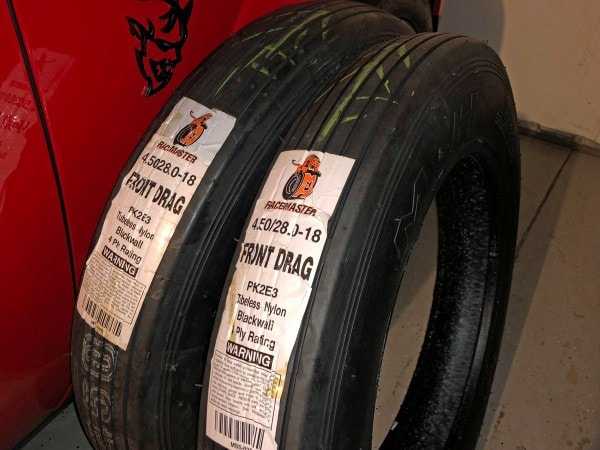
The other good news is that our skinny front tires just showed up, meaning all we have to do is get them mounted and we're ready to go big time on our drag racing efforts. We've got the full 840 horsepower engine tune. We've got the skinny front tires and we've got all the associated parts (switchgear, air cleaner, etc.) installed. We even played around with pulling the subwoofers in the trunk and putting the Demon Crate liner in with all the race goodies.
For our next update we'll be returning to the track, mounting the skinnies and running high-octane fuel. With any luck we'll get kicked out for going to fast.
Update Number 4: The Demon Crate Arrives…And We Use It To Break Our Demon
by Karl Brauer on February 27, 2018
Current Odometer: 1,068 miles Latest MPG: 10.8 Lifetime MPG: 11.82 Maintenance/Service Costs: $0
Days out of Service: 2 hours, 30 minutes
It’s no slouch at 808 horsepower, but taking full advantage of the 2018 Dodge Challenger SRT Demon requires ordering the $1 Demon Crate. You can only order the crate after taking delivery of Dodge’s street-legal drag racer, and it takes about 3 weeks to arrive. However, at $1 there’s simply no reason not to order this item. Just getting five cardboard boxes with the Demon logo on them is probably worth a dollar to most Demon fans, and that’s not including the multiple Demon logos on the crate itself. If that’s still not enough badging for you, the word “DEMON” (in it’s hellish font) appears on nearly every item inside the crate.
What’s included in this devlish $1 box? Everything you need to convert the already-outrageous Dodge Demon into an even more track-oriented device. Let’s start with the new Powertrain Control Module (PCM) that bumps the 6.2-liter Hemi’s peak power and torque from 808/717 to 840/770. You can only access the additional power after putting 100-plus octane fuel in the Demon’s gas tank and pressing the race gas calibration button on the new centerstack switchgear (also included in the Demon Crate). Both of these items are meant to be installed at a Dodge dealer…but we read the installation instructions (also found in the crate) and decided to swap the switchgear and PCM ourselves. What could go wrong?
Honestly, we had every reason to believe the Demon’s computer would freak out if we disconnected the battery, installed the new PCM and then fired it up as if nothing had changed. But we also knew we had Hagerty Plus roadside assistance, meaning free flatbed service to the dealer was just a phone call away, assuming a worst-case scenario. What would a worst-case scenario look like? Who knows…maybe the car throws a series of warning codes while refusing to fire up until a dealer reflashes the Demon’s primary computer. In fact, that’s exactly what happened.
We brought this on ourselves by performing a PCM swap that is supposed to happen in a dealer service bay, where expert technicians and computer terminals are standing by to calibrate the new engine controller. After realizing the Demon would not be driving to Courtesy Chrysler Dodge Jeep Ram under its own power we called Hagerty, who had our bright red Challenger on a flatbed and at the dealership 90 minutes later. About 10 minutes after unloading it we heard the Demon’s distinctive exhaust note from the waiting area, and 15 minutes later we were told the computer was happy and the Demon was ready to go home. Total time from Hagerty roadside assistance call to happy Demon? About 2.5 hours.
That little adventure covers the new PCM and switchgear found in our Demon Crate, but there’s plenty more to talk about. The rest of the items focus on transforming a Demon from hooligan street car to full-fledged drag racer. A pair of skinny front wheels, sized 4.5 inches wide by 18 inches in diameter, are joined by a floor jack, torque wrench, tire pressure gauge and cordless impact wrench with battery charger. These tools make swapping the front wheels easy, and all of it fits in a foam Dodge Demon trunk liner, giving everything a secure location for the drive to and from the track. There’s also canvas tool bag, a fender cover, a performance air filter and a passenger mirror block-off plate (for Demon owners that can’t stomach unnecessary aerodynamic drag).
We should mention the personalized exterior plate on the Demon Crate, which includes the car’s VIN and a “Built for…” message. Also in the crate is a new passenger-side dash vent that has the same VIN and message as the crate’s plate. Dodge assumed most people would put their name in these locations, as in “Built for Horace Dodge”, but plenty of people are being more creative. We like to think of ourselves as creative, so we didn’t put a name on our plate. Instead we put…a fun phrase that we’ll reveal after all the Demons are built (because we want to be the only ones with this phrase on our Demon crate and passenger vent).
We’ve ordered a set of M and H 4.5/28-18 tires for our Demon’s skinny front wheels. These were apparently on backorder but should arrive in the next week. When they show up we’ll get them mounted, grab some high-octane fuel and head for the track to see how close we can get to that coveted 9-second ¼ mile.
Update Number 3: The Demon Hits The Track
by Karl Brauer on February 20, 2018
Current Odometer: 1,022 miles Latest MPG: 10.8 Lifetime MPG: 11.82 Maintenance/Service Costs: $0
Days out of Service: 55 minutes
Few modern performance cars are as track oriented as the 2018 Dodge Challenger SRT Demon. The Demon’s entire claim to fame is its ability to pull a 9.65 second ¼-mile at a drag strip. Yeah, sure, it’s got a few other production car claims to fame. Most powerful V8. Quickest 0-60 time. Highest G-forces. First wheelie. But all those claims require sticky pavement to maximize the Demon’s forward thrust. And the stickiest pavement is always found at a drag strip starting line.
With our long-term Demon’s engine (mostly) past its break-in period, and with the car’s exterior surfaces encased in paint protection film, there wasn’t anything holding us back from exorcising the Demon at our local drag strip. We say “mostly” about the engine break-in period because the odometer was reading 969 miles as we staged for our first run down the track. It would have been nice to have a full 1,000 miles on the Demon before hammering its 6.2-liter V8 repeatedly, but…meh, close enough.
What we really wanted to do was establish some baseline times for the car in pure showroom stock form. We ordered our Demon crate 3 weeks ago, which means it should arrive any day now. Included in the crate is a high-octane engine calibration that raises the Demon’s power and torque from 808/717 to 840/770. There are also skinny front wheels and a performance air filter, all of which will increase the Demon’s acceleration and, theoretically, allow it to run a 9.65 1/4-mile elapsed time.
We’re anxious to install those items, but we wanted to see what the car would run on 91-octane fuel with its lower power numbers, wider front wheels and standard air cleaner. We also wanted to start familiarizing ourselves with the Dodge Demon’s many performance features. The Demon’s drag racing pedigree reads like the feature list for the latest iPhone. It is equipped with items no other car has ever offered, any one of which requires a learning curve. Taken as a group the Demon’s technology could overwhelm. Before we start chasing that 9 second ¼-mile we need to establish a solid knowledge base built on track experience.
Luckily, we’ve been visiting the Dodge Demon forum at hellcat.org, where we learned of another local Southern California racer who got his Demon weeks before us. Ron Silva had already blasted down Irwindale Speedway multiple times, and he was there again when we showed up for our inaugural track experience. Ron happily walked us through the Demon’s extensive drag race feature list, giving us pointers after each run and even shooting some video of our Dodge.
At this point it’s worth mentioning the reception the Demon received as it pulled into Irwindale Speedway’s “tech” area, where track officials certify every car before it can race. We’ve gone through this process at least 50 times over the course of our racing experience, but this was the first time we had multiple officials warning us not to go “too fast” at the track. “Demon, huh? Well, if you hit a 6.4 or better we’re going to take your VIN down and report it to all the NHRA tracks in the country.” A 6.4-second elapsed time in the 1/8th mile equals a 9.9 E.T. in the quarter mile, and if you don’t have a cage in your car (not to mention a racing license and several other items) the NHRA will kick you off their tracks for going faster than 10 seconds in the ¼ mile (or 6.4 in the 1/8 mile).
Now the Demon can certainly hit a sub-10-second ¼ mile if all conditions are right. But those conditions include the 840 horsepower upgrade, skinny (lighter) front wheels, a very sticky starting line and an experienced driver who knows how to fully leverage every one the Demon’s drag racing technologies. We didn’t know how sticky the starting line was that night at Irwindale, but we knew the other items were not present. “The car won’t do better than a 7-second elapsed time” we confidently told the officials, which seemed to satisfy them.
That said, we did want to get strong numbers, and we were happy to have Ron’s guidance. His first advice was to lower the rear tire pressure on the Demon’s Nitto drag radials to between 15 and 20 psi. He also confirmed that putting the Demon in “Drag” mode comprehensively sets the car up for maximum elapsed times. Finally, there’s the issue of the Dodge Demon’s TransBrake and torque reserve system. These items work in concert to store additional supercharger boost when the engine is held between 950 and 2,350 rpm. The driver then releases the TransBrake with the paddle shifters instead of the brake pedal.
These items make for a stronger launch, but they are additional items the driver has to get juuuuust right to benefit elapsed times. Given the breadth of Demon technology we were already dealing with during our first track visit we chose not to use the TransBrake that night.
After setting the rear tire pressure we rolled up to the starting line and performed a burnout to heat the drag radials. As Ron stated, putting the Demon in “Drag” mode engages its line lock feature automatically, which means the rear brakes are not actively holding the rear wheels during a burnout. This reduces strain on the drivetrain and the rear brakes. After the burnout we rolled up to the starting line, set the “Pre-Staged” and “Staged” lights on the Christmas Tree, and watched the three amber lights drop to the green light.
The Demon’s “Drag” mode also deactivates traction control while leaving stability control in place. This means it’s up to the driver to balance the Dodge’s 808 horsepower between maximum acceleration and tire spin. Knowing this had us erring on the side of restraint for our first run, which resulted in minimal wheel spin and a 1/8-mile run of 7.724 seconds at 100.63 mph. Our 60-foot time, a critical measurement for maximum drag strip performance, was 2.037 seconds.
Not bad for our initial attempt, but a 7.7 1/8-mile time translates to approximately a 12-second quarter mile. Not slow, but far off the Demon’s sub-10 second potential. We circled around, got back in the staging lanes and 15 minutes later we pulled a 7.528 time, at 102.04 mph. The 60-foot time dropped to 2.001 seconds. At least we were moving in the right direction. Twenty minutes later we were at the starting line again and pulled our best time of the night: 7.367 seconds at 102.61 mph and a 60-foot time of 1.920 seconds. On that run we could tell the balance between traction and forward thrust was pretty spot on, requiring plenty of effort to keep our neck straight as the Demon squatted and shot forward.
We’d like to report a continued drop in elapsed times, but our next run was another 7.785 at 101.68 mph and a lethargic 2.290 60-foot time. Too much throttle and tire spin that time. The next run was 7.80, and the last run was 7.554. We drove home feeling pretty satisfied with the Demon’s times. Our 7.367 elapsed time translates to roughly 11.4 seconds in the ¼-mile. For an 808 horsepower Dodge Demon, running wide front tires, a full interior (including the heavier upgraded audio system) and no TransBrake that’s pretty quick. There was probably another couple tenths in the car as it sat that night, but we doubt it could have pulled better than a 7.0 time (that’s a 10.9 ¼-mile).
We have to call out two other, literally, cool Dodge Demon technologies. First, the “Power Chiller” uses the Demon’s air conditioning system to cool compressed air entering the supercharger. It works so well that after each drag run we could see the engine’s intercooler air temp barely rise, and then drop immediately as we circled back to the staging lanes. The “Power Chiller” works so well that the Demon’s other cooling technology, the “Quick Cool Down” setting, was really never needed.
The “Quick Cool Down” uses the intercooler pump and engine fan to cool the engine after being shut off (presumably as you sit in the staging lanes between runs). We did see the intercooler air temp rise after turning the engine off, like it does for any engine. And the “Quick Cool Down” setting would slowly lower it. But once the Demon’s 6.2-liter V8 was fired up in “Drag” mode the engine temp dropped back to near ambient air temperature within seconds. It was always at an ideal temp by the time we were staged.
Admittedly, the ambient air temp at Irwindale Speedway that night was in the mid-to-high 70s, so the engine wasn’t fighting the kind of ambient temps it could easily see mid-day at a hot track. But it’s clear the Dodge Demon is capable of thwarting power-robbing heat soak, even in much harsher (hotter) conditions. We might run into those conditions during our next track visit, which will hopefully come soon and hopefully include upgraded power under our Demon’s satin hood.
Update Number 2: Exterior Treatment All Wrapped Up
by Karl Brauer on February 12, 2018
Current Odometer: 820 miles Latest MPG: 8.8 Lifetime MPG: 11.82 Maintenance/Service Costs: $0
Days out of Service: 55 minutes
When it comes to paint protection film, also known as PPF, clear bra, clear film or getting a car “wrapped” we’ve had the same lingering questions many of you probably have. Will the film really stay in place or will it peel up and show bubbles? Will it shrink and shift over time? Will it cause the car’s paint to fade at an uneven rate (assuming you only cover sections of your vehicle’s exterior)? Will the adhesive leave a nasty, paint-damaging residue when the film is finally removed?
These concerns have kept many people from ever applying PPF, but after speaking to several authorities on the matter and hearing how far paint protection film has come in the last 5 years we decided to fully wrap our long-term 2018 Dodge Challenger SRT Demon last week. We were referred to a local shop, Envious Detailing (https://www.enviousdetailing.com) in Orange, California, to have the work performed. After speaking with Eric, the shop’s owner, we had an estimate and decided to get ‘er done.
At this point our ownership experience with the Demon covers about 800 miles. Those have been mostly highway miles with careful attention to the engine break-in procedure. We’ve only floored the car about 10 times (none until after passing 500 miles) and we certainly haven’t done any serious burnouts, donuts or off-road excursions. If you’d asked us, we’d have been confident the paint on our Demon was still pristine.
Well, it was mostly pristine, but Eric noted several chips had already blasted through the clear coat, the TorRed layer and down to the bare metal. None of these were massive chips, but their number and depth surprised us after less than 1,000 miles. Note to OCD car guys: if you buy a new vehicle and want to keep the paint perfect, get it wrapped BEFORE you do any serious driving. Knowing the paint was supposed to cure for at least 2-4 weeks we figured it couldn’t hurt to enjoy driving the car while those weeks passed. We were wrong.
The good news is the average person would be hard pressed to find these chips without a professional like Eric pointing them out. The car still looked great going into Envious Detailing, and after a full clay bar cleaning and polish treatment, plus the application of custom cut SunTek PPF film, it looked even better. Eric’s shop even removed items like the door handles, taillights and exterior mirrors to improve the film’s coverage. We were particularly pleased to get the satin finish on the Demon’s hood, roof and trunk wrapped. As anyone with matte paint experience knows, you basically have no options to fix matte paint once it’s damaged. Any attempt top polish out a scratch or chip will also polish out the matte finish.
Beyond the body wrap process Eric also showed us several window tint options, ranging from a 30 percent reduction in light to an over 90 percent reduction. Eric told us going over 80 percent can make seeing other cars’ headlights difficult at night, so we decided to go with 80 percent for the side and back glass and 30 percent for the windshield. Many of the same concerns we’ve had about PPF also apply to window tinting. We’ve all seen those horrendous bubbling, peeling window tint jobs on other cars…
Eric assured us today’s high-quality window tint (also from SunTek), when applied properly, looks great and holds up for years. He also applied a ClearPlex windshield skin to protect the front window from rock chips. Once the SunTek film is installed Envious Detailing uses Modesta Coatings to improve the film’s gloss and provide an additional layer of protection. These coatings can be applied directly to paint, and many people use them for paint protection, but they also work on protective films. Modesta Coatings make it easier to remove dirt, bird droppings and bugs (from paint and protective films). Eric also applied the coating to the Demon’s wheels to ease future dirt and brake dust cleaning.
This level of paint, glass and wheel work doesn’t come cheap. However, if you have invested in a high-end car it provides piece of mind while protecting your investment.
The price breakdown is as follows:
Paint correction & Gloss Enhancement: $400
Full Body Custom SunTek Clear Bra Application: $6,000
Modesta BC08 Paint/PPF Body Coating: $900
ClearPlex Windshield Skin: $400
Windshield SunTek Window Tint: $250
Side/Back SunTek Window Tint: $450
Modesta BC06 Wheel Coating: $500
Total: $8,900
For that kind of money you’d expect a car to look stunning after all the work is done. Happily, we think our long-term Dodge Demon looks better than stunning. With regard to the window tint, we were thinking more in terms of functional purposes related to cabin temperature and interior material protection from UVs. Those benefits are certainly present, but the dark greenhouse, accented by the dark wheels and satin hood/roof/trunk, looks even better than we anticipated.
Best of all, with the engine past break in and the body properly protected, we can now do what the Demon was engineered for.
Next update: track time!
Update Number 1: Our Demon Got Bent…
by Karl Brauer on January 30, 2018
Current Odometer: 748 miles Latest MPG: 11.85 Lifetime MPG: 13.18 Maintenance/Service Costs: $0
Days out of Service: 55 minutes
Shortly after getting our long-term 2018 Dodge Demon home we noticed a problem we hadn’t seen during delivery. In the center console panel, near the cup holders, we spotted two distinct “depressions” in the metal. It looked as though someone or something had pressed down on the Demon’s panel, bending the console top. If I had to guess I’d say either something very heavy was placed on it or somebody with something in his or her back pocket (keys? small tools?) sat on the console. Maybe during final assembly or transportation?
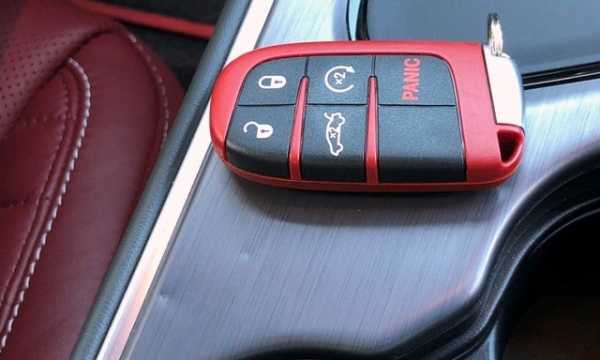
The size and degree of these depressions were minimal, which is probably why we didn’t notice them during the delivery process at Courtesy Chrysler Dodge Jeep Ram. But finding the damage after we’d left still made us feel pretty careless in our inspection of the vehicle. The red mist of a new, 800-plus horsepower TorRed Demon can blind even the most veteran car buyers. We almost considered not doing anything about it. You can see from the photo with the key fob how relatively small and shallow these divots are.
Of course once you see something like this you can’t un-see it, and owning a brand new, $90,000 Dodge Challenger with damage we didn’t cause felt wrong. We sent an email to the dealer principle, Larry Watts, that included these photos to illustrate the damage. We hoped the dealer would believe we didn’t cause the divots, post purchase, even though we failed to identify them before signing all the purchase paperwork.
Larry replied to our email almost instantly, telling us he’d get the part ordered and let us know when it was ready to install. Less than a week later the part was in stock and we headed to the dealership. The installation took less than an hour and cost $0. Courtesy Chrysler Dodge Jeep Ram provides free coffee and a comfortable seating area, two features we utilized while catching up on email during our short wait.
The other big news this week was the arrival of our customized license plates. We ordered the plates on October 11th, right after confirming our long-term Dodge Demon order with the FCA concierge. The California DMV website said customized plates take 10-12 weeks, convincing us the plates would arrive long before the vehicle. But 15 weeks later, and 3 weeks after taking ownership of the Dodge Demon, the plates were still MIA. We called the DMV, waded through several layers of phone menus, put our name and number down for a call back, and waited another hour.
“Did you order classic plates?”
“Yes.”
“Well, those are on a 5-month backlog. There was more demand for them than we expected.”
Hearing that didn’t make us happy, but at 15 weeks in we (hopefully) figured we were only 4-5 weeks away from getting our personalized Demon badges.
A few hours later (that same day) the mail was delivered, including a notice that our plates were in. Two days – plus three more hours in DMV purgatory – had our Demon plates liberated and in hand.
We like to think we were pretty creative with our seven characters. What do you think?
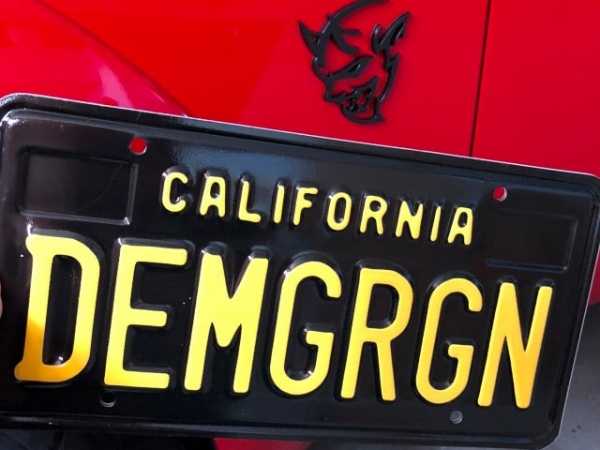
Introduction: Our New Inner Demon!
by Karl Brauer on January 22, 2018
Current Odometer: 682 miles Latest MPG: 11.85 Lifetime MPG: 13.18 Maintenance/Service Costs: $0
Days out of Service: 0
Ten years after the Challenger’s return Dodge’s muscle car is doing better than ever. It’s sales have risen every year since 2008, with Challenger volume now rivaling the struggling Camaro and Mustang. Credit Dodge’s product development and marketing efforts, which have combined to create a non-stop stream of new and interesting versions of the Challenger over the past decade. The latest and greatest Dodge Challenger is the 2018 Dodge Challenger SRT Demon. Building on the 707 horsepower Hellcat that debuted in 2015, the 808/840 horsepower Dodge Demon is arguably the most over-the-top muscle car ever created.
Given the Challenger’s success in the face of dwindling car sales, and given the Dodge Demon possesses the most powerful V8 ever created, making it the quickest production car on the planet, we wondered what it would be like to live with a Demon and treat it like a real car for an extended ownership period. This car is one of several featured in the Kelley Blue Book long-term fleet, and we’ll be adding photos and updates on what it’s like to own and drive this high-performance Challenger every 2 weeks. It’s not everyday we get to feature a car like this in the KBB long-term fleet, and we’re looking forward to the ownership experience.
We purchased our Challenger SRT Demon from Courtesy Chrysler Dodge Jeep Ram in San Juan Capistrano, California. The dealership honored our request to save every item from the Demon’s shipping process (interior plastic, exterior tags, etc.) and waited until we arrived to process and wash the Challenger. Larry Watts, the dealer’s General Manager, was easy to work with, keeping us informed on the Demon’s status during transit and checking back with us after delivery to see if we needed anything.
The Demon’s base price is $83,295, but we added the Painted Black Satin Graphics Package over the hood, roof and trunk lid for $3,495, the Comfort Audio Group — Leather Seats for $2,495, the Demon Vehicle Storage Package (car cover) for $475, the Demon Logo Laguna Leather Seat for $295, the engine block heater for $95, the Rear Seat Option — Leather for $1 and the Trunk Carpet Kit for $1. There’s also a $1,700 gas guzzler tax on every Dodge Demon, plus a destination charge of $1095, for a grand total of $92,949. About the only option we skipped was the $5,000 sunroof. Adding additional weight, and weakening the structural integrity of a high-horsepower drag car, didn’t seem like the best use of funds.
Taking delivery on January 3rd, with 12 miles on the odometer, we decided to follow a traditional break-in procedure, meaning no full-throttle applications, no upshifts beyond 4,000 rpm and a focused effort to vary engine RPM for the first 500 miles. Driving a Dodge Demon like this in the frantic pace of Southern California’s aggressive traffic might sound like an exercise in frustration. It’s not. The Challenger’s 808 horsepower and 717 pound feet of torque delivers the kind of acceleration few cars can match, even when soft-pedaling the Demon for break-in purposes. We never had an issue placing the car wherever we wanted.
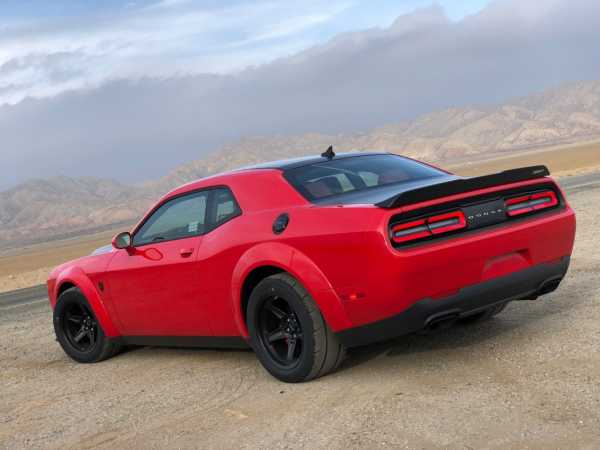
We actually put most of the break-in miles on the Dodge in a single day, just to get it out of the way. Our triangular route started at Kelley Blue Book’s home office in Irvine, California, snaked north up the 405 and 101 to Camarillo, then continued along the coast through Santa Barbara and Santa Maria before turning east on state route 166. From there we shot across the Central Valley to the 5 freeway, near Bakersfield, then headed south back to Orange County. After 480 miles in one day in the world’s quickest production street car you might expect us to feel somewhat beat up.
In fact, it was some of the easiest 480 miles we’ve driven in terms of comfort and convenience. Don’t forget, this car has all the amenities, including heated and cooled leather seats, a WiFi hotspot, SiriusXM radio (with a free 12-month subscription) and cruise control. About the only thing missing from the Dodge Demon in terms of modern luxury is all the latest driver assist technology like lane-keeping assist and smart cruise control. And, honestly, we never missed it. Technology is great, but handing the reigns of 800-plus horses off to a computer doesn’t interest us. Beyond the car’s easy-going, luxurious nature, we were happily surprised by how well it handled the curves of Route 166. Putting the adjustable suspension and steering in “Sport” mode reduces body roll and tightens steering response. For a “drag” car, it’s surprisingly nimble in the twisties.
With regard to horsepower, let’s clarify why we initially listed the Demon’s power at 808/840. When new, as delivered by the dealer, the supercharged 6.2-liter V8 makes 808 peak horsepower and 717 peak pound-feet of torque. However, after taking delivery every Demon owner can order the $1 “Demon Crate” that includes an assortment of race-oriented equipment. We’ll get into all the Demon Crate items in the coming weeks, but among them is a new set of buttons for the Challenger’s center stack. The new switchgear features a gas pump button that can recalibrate the engine to make 840 horsepower (and 770 pound-feet of torque) if 100-plus octane fuel is used. The dealer has to replace the switchgear and re-flash the engine management computer to take advantage of the higher octane fuel. We’ve already ordered our Demon Crate and expect to have it in a few weeks.
We also plan to “wrap” the car with protective film after having a paint correction process performed in the next couple weeks. We’re particularly nervous about the satin/matte finish on the hood, roof and trunk. The contrast between the bright TorRed body and matte black surfaces gives the Demon an impactful look, though we’ve already noted a few scratches in the hood that could prove nearly impossible to remove without damaging the matte finish. The quicker we can get it protected the better.
There’s also going to be quite a learning curve to fully leverage all the race technology packed into the Dodge Demon. Beyond expected performance car features like paddle shifters, launch control and adjustable suspension settings the Demon also features line lock brakes for scrubbing the tires at the drag strip, a transbrake for quicker launches and an “Air Chiller” that redirects the car’s air conditioning effect from the cabin to the intake manifold, cooling the incoming air charge and increasing power. Master all these features and the Dodge Demon can pull zero-to-60 in 2.3 seconds and the quarter-mile in 9.65 seconds at 140 mph, as certified by the NHRA.
Can we really get our street-legal Dodge Demon long-term test car to pull a 9-second quarter mile? Maybe, maybe not. But we’ll be taking it to the track soon (after we get our Demon Crate and the engine controller re-flashed) and plan to give it our best shot. Tune in every couple weeks to see how we’re doing and what it’s like to own a Dodge Demon.
2018 Dodge Challenger SRT Demon First Drive: Brutally Effective
– Indianapolis, Indiana
Let’s be honest: All you really want to know about the Dodge Demon is what it feels like to launch it down a drag strip. To find out, I’m driving a Go Mango-painted one that’s filled with high-octane fuel to unlock all 840 horsepower and 770 pound-feet of torque available from its engine. It wears skinny front-runner tires, and has the optional harness bar and harnesses fitted in place of the Challenger’s normal back seat. The only way this Demon could be better primed for going fast is if it were built without a passenger seat; models that do not include that option are another 58 pounds lighter.
Do it perfectly, and Dodge says the Demon will accelerate at 1.8 g – quicker than if you dropped it off a cliff – and run a quarter mile in 9.65 seconds at 140 miles per hour. That’s record-setting stuff. Even with me at the helm, the Demon hooks up and explodes out of the gate. The nose rises as the rear tires hunker into the road surface, and the sprint to 30 mph is over before I can blink. Supercharger whine deafens as the car tears down the track, with upshifts that snap my head back each time. It pulls and pulls and pulls, and feels like it would keep going long, long after crossing the finish line.
The timing lights are turned off for our test drives at Lucas Oil Raceway to stop anyone getting over-eager behind the wheel, but there’s no doubt in my mind that I’ve never driven myself through a quarter-mile as quickly as I have in the Demon. It is a brutally fast machine.
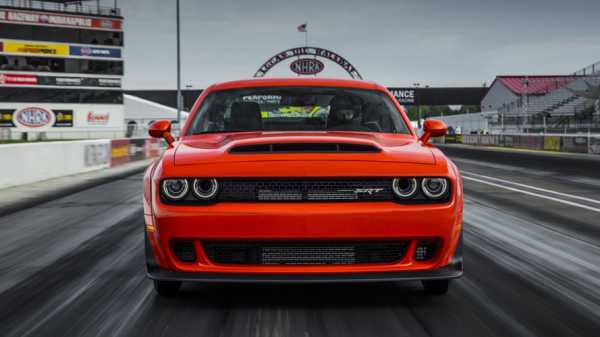
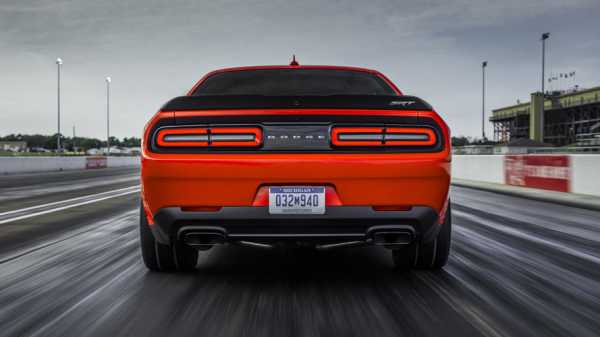
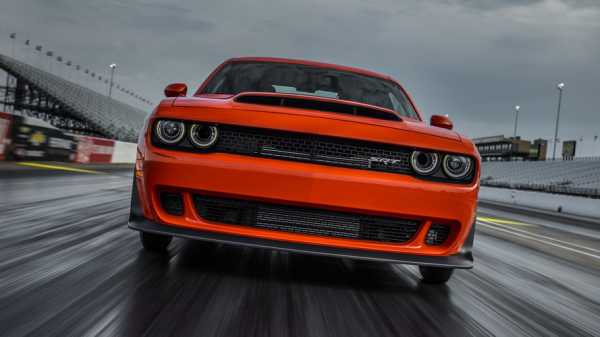

Getting the Demon off the line is not, however, simply a case of selecting Drive and flooring the throttle; it requires a mix of both manual footwork and electronic trickery. To start, I creep the burbling car up into the burnout box, tap “Activate Line Lock” on the touchscreen, stand on the brake pedal, then press and hold the “OK” button the steering wheel button to keep the front wheels stationary. Then I apply lots of throttle, cackle with laughter at the plume of smoke in the mirrors, and then release “OK’ and roll forward.
For our runs, Dodge techs lowered the rear tire pressure to 20 psi, the idea being that they’d warm to 23 psi after hitting the burnout box. And on drag-radial tires like the Demon’s Nittos, burnouts are for more than just show.
“We want to get it [the tire] up to proper operating temperature, and we want to get all the stones and debris off it,” explains Jim Wilder, Challenger SRT vehicle development manager.
With the Demon in Drag Mode – tap the “SRT” dash button twice to activate it – the suspension is primed for an aggressive nose-lifting launch, the air conditioning is redirected to chill the engine inlet air, and I can use the TransBrake (it’s the first-ever factory car with one) by simply pulling the two paddle shifters. I hold them both and brake-torque the engine to preload the driveline – “If we didn’t do that, the impacts [on launch] would be horrendous,” says Wilder.
I can use the TransBrake by simply pulling the two paddle shifters. I hold them both and brake-torque the engine to preload the driveline – “If we didn’t do that, the impacts [on launch] would be horrendous,” says Wilder.
Then I take my left foot off the brake pedal and give it some throttle, holding the car in place only by keeping one shift paddle held. Raise the engine revs to about 1,300 rpm, release the paddle, and hold hold on tight. Quickly move to full throttle, and there’s almost no wheel spin or hesitation before the car charges away down the track in a cacophony of fury.
Though it must, of course, be treated with respect, the Demon isn’t as terrifying as I expected; it pretty much just sticks and goes. There’s tremendous grip from the tires, the adaptive suspension helps soften the nose-lifting launch events, and even in Drag Mode the stability control is still active to help catch you if you were to get squirrely. As super-quick cars go, it’s the closest thing to an Easy Button around.
The Demon is also essentially a rolling billboard for the entire Dodge brand; excitement for this 3,300-unit special can bolster sales of other cars.
“There must be a real business reason why you make a nine-second street car,” says Tim Kuniskis, head of Fiat Chrysler Automobiles passenger car brands. “The point is, this is Dodge’s Super Bowl commercial … It’s going to tattoo into their subconscious something about this brand.”
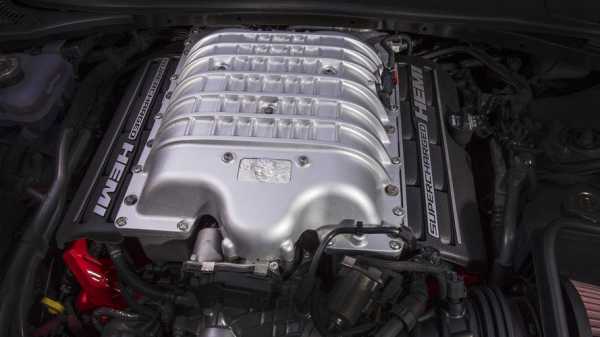
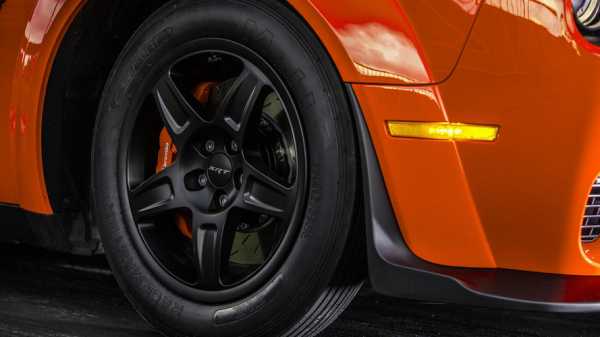
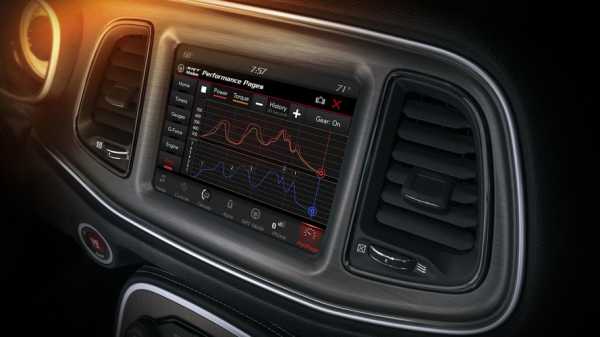
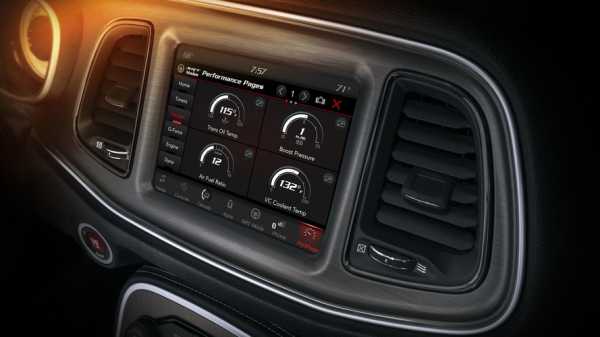
By now, Dodge has also tattooed our subconscious with every detail about the engineering trickery that makes the Demon so fast. Its 6.2-liter supercharged V8 makes a healthy 808 hp and 717 lb-ft of torque on regular 91-octane gas, but if you buy the optional $1 Demon Crate and install a new engine-management computer and fill up with 100-plus-octane fuel, ignition timing increases by 5 to 8 degrees to extract 840 hp at 6,300 rpm and 770 lb-ft at 4,500 rpm. The engine’s redline is 6,500 rpm to accommodate the higher horsepower peak, versus 6,300 rpm in the Hellcat. Finally, a dramatically redesigned air intake tract has 35-percent less restriction than the one in a regular Hellcat.
Because heat is the enemy of horsepower and, more importantly for drag racers, consistency, much effort was put into keeping the engine cool. The packaging of the cooling system was completely redeveloped compared to the Hellcat, and in Drag Mode, the Air-Chiller feature uses the air conditioner to further cool inlet air. A special after-run system can keep the coolant pumps and fans running to bring temperatures back down to normal after a hard run.
“That basically avoids all of the heat-soak problems that would normally be associated with your second or third or fourth run down the drag strip,” says Chris Cowland, Director of Advanced and SRT Engineering for FCA North America.
The Demon is also essentially a rolling billboard for the entire Dodge brand; excitement for this 3,300-unit special can bolster sales of other cars.
Compared to a Hellcat, the Demon is also as much as 215 pounds lighter, thanks to the removal of things like the back seat and 16 speakers, as well as the fitment of smaller, lighter brakes; lighter wheels; and hollow anti-roll bars. Those lighter wheels measure 18 inches in diameter and 11 inches wide, and wear street-legal drag radial tires from Nitto. Dodge engineers assure me they’re totally fine to use in the rain, but I doubt many owners will put that to the test.
In addition to special modes for the adaptive suspension, the Demon’s chassis gets slightly less rear camber for improved straight-line grip. It has electric power steering rather than the Hellcat’s hydraulic arrangement, the better to cope with the added mass and grip of the new tire package.
Many of the new parts provide what may seem like only marginal gains in acceleration, but it all adds up in the long run to get the car away from the start as briskly as possible. The new high-stall torque converter, for instance, can save about a tenth of a second off a run. Likewise, Demon driveline engineer Joe Johnson says that using the TransBrake cuts up to an additional tenth off a quarter-mile run.
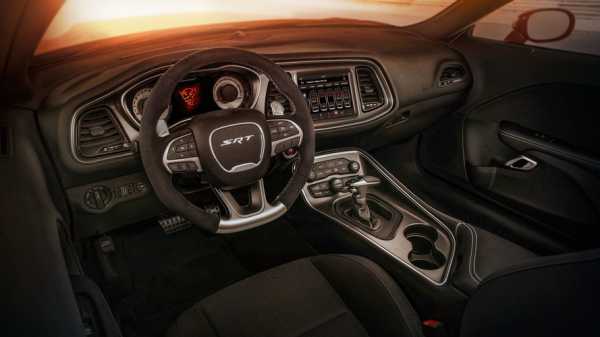
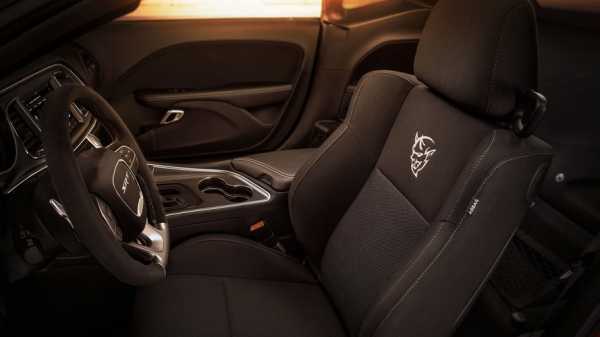
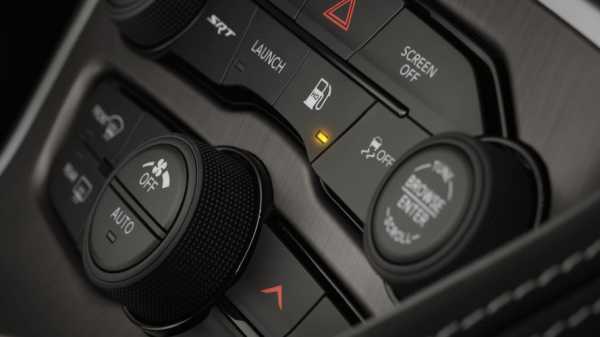
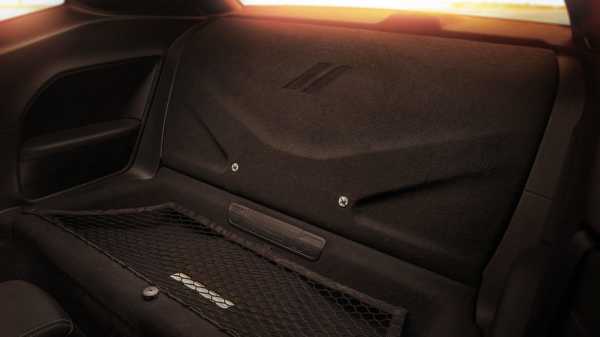
There are two reasons it shaves time: First, you can build more revs before launching to take advantage of the torque converter than by brake-torquing alone. Second, the TransBrake also puts the engine in “Torque Reserve” mode, which uses cylinder-deactivation tech to run the V8 on four or six cylinders, while closing the supercharger bypass valve. The result: The engine builds about 8 psi of boost (the maximum amount under load is 14.5 psi), compared to only 3 psi if you torque-braked the engine the normal way, allowing for launching the car with up to 534 lb-ft of torque ready immediately.
“We looked back at the established drag-racer tricks and said, ‘Which one of these can we use?’’” says Johnson.
Of course, Dodge still had to put the Demon through all of its normal test procedures so it could be sold at dealerships, registered at your local DMV, and covered by a warranty.
If you are lucky enough to buy one, though, please make sure you take it to the track at least once. The Dodge Demon’s brilliance is the brutal effectiveness with which it converts gasoline into straight-line speed.
“This is not taking a Hellcat and doing a tuning job on it and making it go fast. We have a lot of constraints with a production car, “ says Cowland. “We’re going to give the car a warranty, so we have all our traditional durability and validation tests that we’d put a normal powertrain through.”
In fact, he says that one particular Demon development car survived more than 1,100 real-world quarter-mile passes on its original engine, and more than 500 on its original differential. That should help calm the nerves of anyone who wants to use the car as intended at their local track.
After half a dozen drag-strip runs, I’m able to briefly slip out to drive a Demon on regular public roads. The overwhelming impression is one of comfort: with lower spring rates than a Hellcat (35-percent softer in front, 28-percent softer in back), plus the far bigger sidewalls of the 315/40R18 tires compared to a Hellcat’s 275/40ZR20 rubber, the Demon is positively plush over broken concrete when everything is switched back to the Street driving mode. This drag-racing special doesn’t punish and brutalize passengers’ spines.
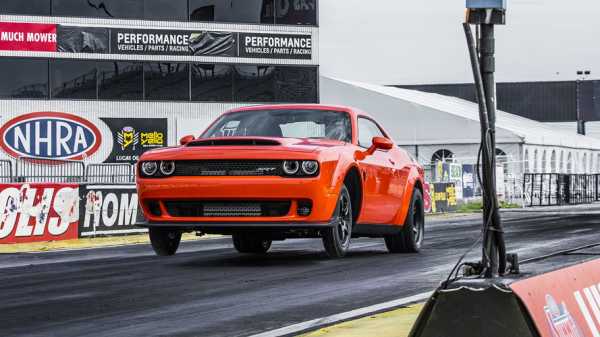
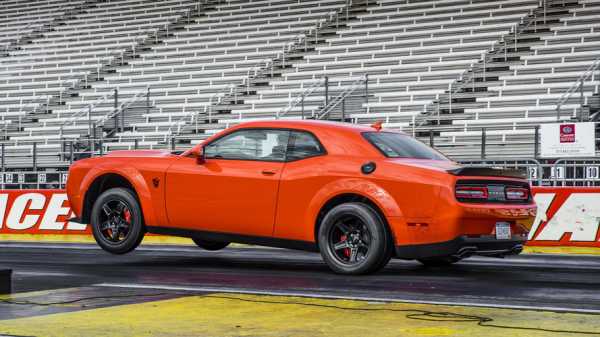
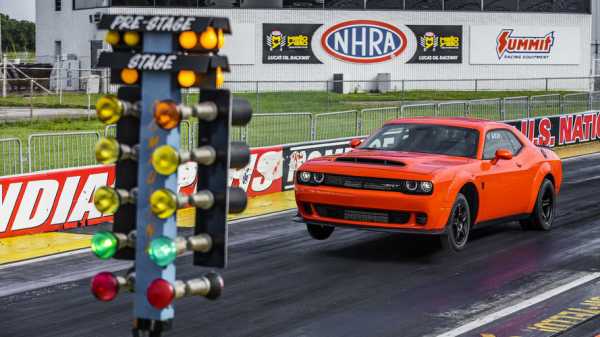
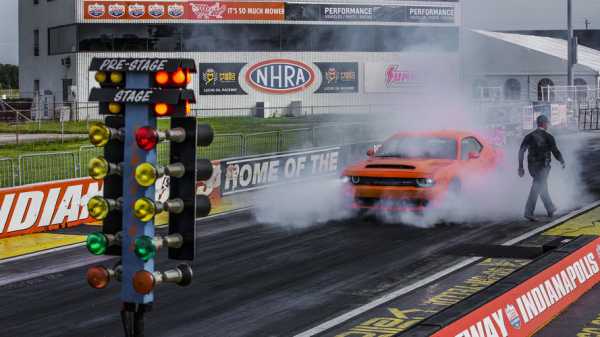
Otherwise, it mostly drives like any other Hellcat in traffic. Supercharger whine and exhaust roar dominate the experience, and you can pretty much break the rear tires loose on command – though not quite so easily as in a regular Hellcat thanks to the wider rubber. The electric power steering is reasonably light, too. If you wanted to daily-drive your Demon, well, it wouldn’t be a problem.
If you are lucky enough to buy one, though, please make sure you take it to the track at least once. The Dodge Demon’s brilliance is the brutal effectiveness with which it converts gasoline into straight-line speed. That doesn’t mean you’ll instantly be able to replicate that 9.65-second pass – as you’ll see in the video above, it took me several tries to really nail the launching process. But it does mean you’ll be at the helm of an incredible thrill ride that leaps down a track in a way no other factory-fresh vehicle can do.
Dodge engineers made enormous promises and boasts with the Demon. And you know what? They delivered on all of them.
Photos: FCA
"Питер - АТ"
ИНН 780703320484
ОГРНИП 313784720500453
